Compositions and methods for drug sensitization of parasites
Reddy , et al. Ja
U.S. patent number 10,543,200 [Application Number 15/754,244] was granted by the patent office on 2020-01-28 for compositions and methods for drug sensitization of parasites. This patent grant is currently assigned to The Texas A&M University System. The grantee listed for this patent is The Texas A&M University System. Invention is credited to Billy F. McCutchen, Manchi C M Reddy, James C. Sacchettini, Nian E. Zhou.



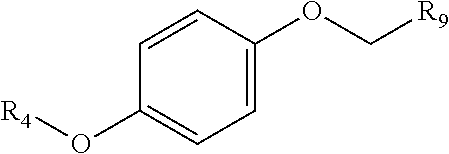





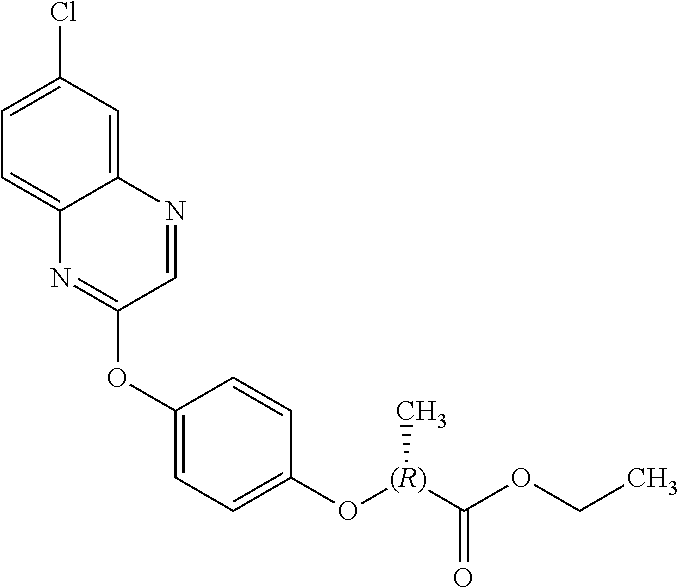


View All Diagrams
| United States Patent | 10,543,200 |
| Reddy , et al. | January 28, 2020 |
Compositions and methods for drug sensitization of parasites
Abstract
Compositions and methods for inhibiting and/or sensitizing or re-sensitizing a parasite to an antiparasitic drug are provided. The compositions can comprise a an arylphenoxypropionate derivative, an aryloxyphenoxyacetate derivative, an aryloxyphenylacetate derivative, one or more substituted quinols, or a pharmaceutically acceptable salt, hydrate, or prodrug thereof, or a combination thereof in an amount and formulation sufficient to sensitize the parasite to the drug, treating infection of a patient by a parasite with a drug, or to prevent symptomatic infection of a patient by a parasite with a drug.
| Inventors: | Reddy; Manchi C M (College Station, TX), Sacchettini; James C. (College Station, TX), Zhou; Nian E. (Naperville, IL), McCutchen; Billy F. (College Station, TX) | ||||||||||
|---|---|---|---|---|---|---|---|---|---|---|---|
| Applicant: |
|
||||||||||
| Assignee: | The Texas A&M University
System (College Station, TX) |
||||||||||
| Family ID: | 58101196 | ||||||||||
| Appl. No.: | 15/754,244 | ||||||||||
| Filed: | August 26, 2016 | ||||||||||
| PCT Filed: | August 26, 2016 | ||||||||||
| PCT No.: | PCT/US2016/048890 | ||||||||||
| 371(c)(1),(2),(4) Date: | February 21, 2018 | ||||||||||
| PCT Pub. No.: | WO2017/035438 | ||||||||||
| PCT Pub. Date: | March 02, 2017 |
Prior Publication Data
| Document Identifier | Publication Date | |
|---|---|---|
| US 20180243275 A1 | Aug 30, 2018 | |
Related U.S. Patent Documents
| Application Number | Filing Date | Patent Number | Issue Date | ||
|---|---|---|---|---|---|
| 62210224 | Aug 26, 2015 | ||||
| Current U.S. Class: | 1/1 |
| Current CPC Class: | A61K 31/498 (20130101); A61P 33/02 (20180101); A61K 31/496 (20130101); A61K 31/427 (20130101); A61K 31/428 (20130101); A61K 31/4439 (20130101); A61K 31/541 (20130101); A61K 31/5355 (20130101); A61K 31/517 (20130101); A61K 31/44 (20130101); A61K 31/454 (20130101); A61K 31/423 (20130101); A61K 31/5377 (20130101); A61K 31/7036 (20130101); A61K 31/501 (20130101); A61K 31/353 (20130101); Y02A 50/30 (20180101); Y02A 50/419 (20180101); Y02A 50/423 (20180101); Y02A 50/49 (20180101); Y02A 50/411 (20180101); Y02A 50/491 (20180101); Y02A 50/421 (20180101); Y02A 50/414 (20180101); Y02A 50/409 (20180101) |
| Current International Class: | A61K 31/44 (20060101); A61K 31/454 (20060101); A61K 31/4439 (20060101); A61K 31/428 (20060101); A61K 31/7036 (20060101); A61K 31/498 (20060101); A61K 31/501 (20060101); A61K 31/5377 (20060101); A61K 31/496 (20060101); A61K 31/423 (20060101); A61P 33/02 (20060101); A61K 31/541 (20060101) |
References Cited [Referenced By]
U.S. Patent Documents
| 2005/0142113 | June 2005 | Mcleod et al. |
| 2007/0105848 | May 2007 | Wood |
| 2009/0197943 | August 2009 | Chan et al. |
| WO 88/04294 | Jun 1988 | WO | |||
| 2012/135064 | Oct 2012 | WO | |||
| 2015/127089 | Aug 2015 | WO | |||
| 2015/131019 | Sep 2015 | WO | |||
Other References
|
Zuther et al. (PNAS, 9(96), 1999; 13387-13392). cited by examiner . Qian et al. (parasitlolgy International 64; 597-602 (2015) first publishing on line Aug. 8, 2015. cited by examiner . International Search Report and Written Opinion for International application No. PCT/US2016/48890, dated Nov. 4, 2016, 15 pages. cited by applicant . Office Action for Eurasian Patent Application No. 201890575, dated Oct. 26, 2018; 4 pages. cited by applicant . Partial Supplementary European Search Report for European Patent Application No. 16840186.7, dated Mar. 7, 2019; 15 pages. cited by applicant. |
Primary Examiner: Gembeh; Shirley V
Attorney, Agent or Firm: Baker Botts L.L.P.
Parent Case Text
CROSS-REFERENCE TO RELATED APPLICATIONS
This application is a national phase of International Application No. PCT/US2016/048890 filed Aug. 26, 2016 which claims priority to U.S. Provisional Patent Application Ser. No. 62/210,224, filed Aug. 26, 2015, all of which are hereby incorporated by reference in their entirety.
Claims
The invention claimed is:
1. A method of sensitizing a parasite to a drug comprising administering an arylphenoxypropionate derivative, an aryloxyphenoxyacetate derivative, an aryloxyphenylacetate derivative, one or more substituted quinols, or a pharmaceutically acceptable salt, hydrate, or prodrug thereof, or a combination thereof to the parasite in an amount and for a time sufficient to sensitize the parasite to the drug, wherein the parasite is a species of the genus Plasmodium, a species of the genus Ascaris, a species of the genus Enterobius, a species of the genus Trichinella, a species of the genus Haemonchus, a species of the genus Aphelenchoides, a species of the genus Ditvlenchus, a species of the genus Globodera, a species of the genus Heterodera, a species of the genus Longidorus, a species of the genus Meloidogyne, a species of the genus Nacobbus, a species of the genus Pratvlenchus, a species of the genus Trichodorus, a species of the genus Xiphinema, a species of the genus Bursaphelenchus, a species of the genus Fasciola, a species of the genus Coccidoides, or a species of the genus Onchocerca, or the parasite is selected from the group consisting of Pedicululs humanus, Phthiriasis pubis, Sarcoptes scabiei, Schistosoma mansoni, Schistosoma japonicum, Schistosoma haemotobium, Trichobilharzia regenti, Clonorchis simensis, Fasciola hepatica, Fasciola gigantica, Opisthorchis viverrinil, Paragonimus westermani, Paragonimus kellicotti, Fasciolopsis buski, Metagonimus vokagawai, Heterophyes heterophyes, Echinococcus granulosus, Echinococcus multilocularis, Taenia saginata, Taenia solium, Taenia asiatica, Hvmenolpeis nana, Hvmenolpeis diminuta, Diphvllobotrium latum, Diphvllobotrium mansonoides, Spirometra erinaceieuropaei, Dracunculus medinensis, Onchocerca volvulus, Lo vaginalis a loa, Mansonella perstans, Mansonella ozzardi, Mansonella streptocera, Wucheria bancrofti, Brugia malavi, Brugia timori, Gnathostoma spinigerum, Gnathostoma hispidium, Ancylostoma duodenale, Ancylostoma brazilienes, Necator americanus, Angiostrongylus cantonensis, Ascaris lumbricoides, Toxocara canis, Toxocara cati, Strongyloides stercoralis, Enterobius vermicularis, Trichinella spiralis, Trichuris trichiura, Cryptosporidium hominis, Cryptosporidium parvum, Isosporiasis belli, Cyclospora cavetanesis, Balantidium coli, Entamoeba histolvtica, dispar, Giardia lamblia, Trichmonas vaginalis, Dientamoeba fragilis, Blastocystis hominis, Plasmodium falciparum, Plasmodium vivax, Plasmodium ovale, Plasmodium malariea, Babesia divergens, Babesia microfti, Trypanosoma brucei, Trypanosoma cruzi, Leishomania mexicana, Leishomania aethiopica, Leishomania tropic, Leishomania braziliensis, Leishomania donovani, and Leishomania infantum, Eimeria vermiformis, Eimeria brunett, Eimeria praecox, Eimeria maxima, Eimeria mitis, Eimeria necatrix and Eimeria tenella.
2. The method of claim 1, further comprising administering an arylphenoxypropionate derivative, an aryloxyphenoxyacetate derivative, an aryloxyphenylacetate derivative, one or more substituted quinols, or a pharmaceutically acceptable salt, hydrate, or prodrug thereof, or a combination thereof to the parasite before administering the drug to which the parasite is sensitized.
3. The method of claim 1, further comprising administering an arylphenoxypropionate derivative, an aryloxyphenoxyacetate derivative, an aryloxyphenylacetate derivative, one or more substituted quinols, or a pharmaceutically acceptable salt, hydrate, or prodrug thereof, or a combination thereof to the parasite concurrently with the drug to which the parasite is sensitized.
4. The method of claim 1, further comprising administering an arylphenoxypropionate derivative, an aryloxyphenoxyacetate derivative, an aryloxyphenylacetate derivative, one or more substituted quinols, or a pharmaceutically acceptable salt, hydrate, or prodrug thereof, or a combination thereof to the parasite after administering the drug to which the parasite is sensitized.
5. The method of claim 1, further comprising administering an arylphenoxypropionate derivative, an aryloxyphenoxyacetate derivative, an aryloxyphenylacetate derivative, one or more substituted quinols, or a pharmaceutically acceptable salt, hydrate, or prodrug thereof, or a combination thereof to the parasite a second or greater time.
6. The method of claim 1, wherein administering an arylphenoxypropionate derivative, an aryloxyphenoxyacetate derivative, an aryloxyphenylacetate derivative, one or more substituted quinols, or a pharmaceutically acceptable salt, hydrate, or prodrug thereof, or a combination thereof to the parasite in an amount and for a time sufficient to sensitize the parasite to the drug comprises rendering the parasite susceptible to the drug at a lower dose than in the absence of an arylphenoxypropionate derivative, an aryloxyphenoxyacetate derivative, an aryloxyphenylacetate derivative, one or more substituted quinols, or a pharmaceutically acceptable salt, hydrate, or prodrug thereof, or a combination thereof.
7. The method of claim 1, wherein administering an arylphenoxypropionate derivative, an aryloxyphenoxyacetate derivative, an aryloxyphenylacetate derivative, one or more substituted quinols, or a pharmaceutically acceptable salt, hydrate, or prodrug thereof, or a combination thereof to the parasite in an amount and for a time sufficient to sensitize the parasite to the drug comprises rendering the parasite susceptible to a drug that the parasite would not be susceptible to in the absence of an arylphenoxypropionate derivative, an aryloxyphenoxyacetate derivative, an aryloxyphenylacetate derivative, one or more substituted quinols, or a pharmaceutically acceptable salt, hydrate, or prodrug thereof, or a combination thereof.
8. The method of claim 1, wherein the drug comprises an antiparasitic drug and wherein administering arylphenoxypropionate derivative, an aryloxyphenoxyacetate derivative, an aryloxyphenylacetate derivative, one or more substituted quinols, or a pharmaceutically acceptable salt, hydrate, or prodrug thereof, or a combination thereof to the parasite in an amount and for a time sufficient to sensitize the parasite to the drug comprises rendering the parasite susceptible to death or a decrease in growth due to the antiparasitic drug.
Description
TECHNICAL FIELD
The present disclosure relates to compositions for parasite inhibition and/or sensitization or re-sensitization of a parasite to another drug or combination of drugs. In particular, it relates to compositions including one or more arylphenoxypropionate derivatives, such as, but not limited to, quizalofop, fenoxaprop, proquizalofop, and haloxyfop, one or more aryloxyphenoxyacetate derivatives, one or more aryloxyphenylacetate derivatives, and one or more substituted quinols, and combinations thereof. The present disclosure also relates to methods of parasite inhibition and/or sensitizing or re-sensitizing a parasite to another drug or combination of drugs by applying more arylphenoxypropionate derivatives to the parasite.
BACKGROUND
Parasitic infection is treated, or prevented, by the administration of a drug or drugs, such as xenobiotic chemotherapeutic drugs, to a susceptible or infected host organism. Effective treatment of parasitic infection by drug administration is frequently impaired, however, due to resistance of the parasite to the drug. Such resistance can be "inherent" to the parasite in the sense that the susceptibility of the parasite to the drug has not increased due to widespread use of the drug. Commonly, however, drug resistance of infectious parasites is observed due to evolved resistance associated with widespread treatment with the drug and associated selection pressure for resistant phenotypes. Currently, many infectious parasites are completely or highly resistant to available drugs and drug combinations, and parasites still susceptible to available drugs require treatment with greater doses than previously required, such that complete or effectively complete resistance is foreseeable.
For example, chloroquine resistance in certain species of malaria-causing Plasmodium parasites is so widespread that alternative or combination anti-malarial therapies are now required, and many parasitic species, including malaria-causing Plasmodium species, are now multi-drug resistant. As a further example, the incidence of parasite resistance to avermectins, a widely used class of nematicides, acaridices and insecticides in veterinary and human medicine and plant protection, is increasing.
Resistance of infectious parasites to anti-parasitic drugs can be avoided or lessened by rendering the parasites more sensitive to one or more drugs. The calcium channel blocker Verapramil, for example, has been evaluated for its effect on sensitization of parasites to xenobiotics. However, safe, economical, and effective methods for sensitizing parasites in such a manner are lacking.
SUMMARY
Compositions and methods for inhibiting and/or sensitizing or re-sensitizing a parasite to an antiparasitic drug are provided. The compositions can comprise a an arylphenoxypropionate derivative, an aryloxyphenoxyacetate derivative, an aryloxyphenylacetate derivative, one or more substituted quinols, or a pharmaceutically acceptable salt, hydrate, or prodrug thereof, or a combination thereof in an amount and formulation sufficient to sensitize the parasite to the drug, treating infection of a patient by a parasite with a drug, or to prevent symptomatic infection of a patient by a parasite with a drug.
BRIEF DESCRIPTION OF THE DRAWINGS
A more complete understanding of the present embodiments and advantages thereof may be acquired by referring to the following description taken in conjunction with the accompanying drawings, which depict embodiments of the present disclosure, and in which like numbers refer to similar components, and in which:
FIG. 1 is a graph of oocyst numbers vs. days post infection in mice with Cryptosporodosis treated with a control or test compounds;
FIG. 2 is a graph of fecal volume vs. days post infection in calves with Cryptosporodosis treated with a control or test compound;
FIG. 3 is a graph of urine volume vs. days post infection in calves with Cryptosporodosis treated with a control or test compound;
FIG. 4 is a graph of overall clinical evaluation vs. days post infection in calves with Cryptosporodosis treated with a control or test compound;
FIG. 5 is a graph of fecal consistency vs. days post infection in calves with Cryptosporodosis treated with a control or test compound;
FIG. 6 is a graph of percent weight change over a trial period in calves with Cryptosporodosis treated with a control or test compound; and
FIG. 7 is a graph of lesion scores for duodenal lesions in broiler chicks with coccidiosis that were untreated or treated with a control or test compound.
DETAILED DESCRIPTION
The present disclosure relates to compositions and methods for inhibition and/or drug-sensitization of a parasite. These compositions and methods are described in further detail below.
Unless otherwise indicated by the specific context of this specification, a parasite can include any type of parasite, or any part thereof. Furthermore, it can include a parasite in a host organism, or outside a host organism, such as in the environment occupied by an organism susceptible to infection by the parasite. The organism or host organism can be any animal. By way of example, and not limitation, the organism or host organism can be a mammal, such as a human, a pet mammal such as a dog or cat, an agricultural mammal, such as a horse, cow, pig, sheep, or goat, or a zoo mammal.
Although many embodiments herein are described with reference to a single parasite, the present disclosure is not so limited. The present disclosure encompasses, for example, infections of a single host animal with a plurality of parasites of the same species and with a plurality of parasites of different species, concurrently or otherwise. These embodiments and others will be readily apparent to one of ordinary skill in the art in view of the present disclosure.
Drug-sensitization, unless otherwise indicated by the specific context of this specification, can include increased sensitivity to a drug, decreased resistance to a drug, or potentiation of a drug's activity or efficacy. Any effect can be measured using any methods accepted in the art. In certain embodiments, drug-sensitization can be determined by an increased ability of the drug to inhibit a parasite. Parasitic inhibition can include killing the parasite, rendering the parasite more susceptible to the immune system of a host organism, arresting the parasite in a phase of its life cycle that is relatively benign with respect to the host organism, reducing the rate of propagation of the parasite in the host organism, or otherwise negatively affecting a parasite. An increased ability of the drug to inhibit a parasite can be demonstrated by, for example, an ability to inhibit the cell with a reduced amount of drug or in a shorter period of time than in the absence of drug-sensitization. In the case of drug-resistant parasites, which include parasites with inherent or acquired resistance, drug-sensitization can result in a renewed, restored, restored or newly acquired ability of the drug to inhibit a parasite or type of parasite.
Administration to a parasite, unless otherwise indicated by the specific context of this specification, can include administration directly to a parasite or indirect administration to a parasite, such as by direct or indirect administration to a host organism infected by the parasite or by prophylactic administration to an organism susceptible to infection by the parasite, or such as by administration to the environment of the parasite, such as by administration to an environment of the parasite. By way of example and not limitation, administration to a parasite can include, in addition to directly contacting the parasite with the composition administered, oral, enteral, and parenteral administration to an infected or susceptible host, as well as administration of the compound to a body of or source of water, for example, in which the parasite resides or will reside, as well as administration of the compound to a substrate or fomite upon which the parasite resides or will reside, or upon which another host or susceptible host organism resides or will reside, such as, for example, a mosquito netting, a portion of a plant such as a leaf, or a consumer product that can come into close contact with the skin of a human or animal, such as a bedsheet, a protective athletic garment, or a harness. By way of further example, the compositions of the present disclosure can be administered to a susceptible animal or infected host in the form of aerosolized particles, e.g., by way of aerosolizer, nebulizer or other like device, or transdermally, or transbucally, or sublingually, or by subcutaneous administration, or any other method of drug delivery, and any combination thereof.
Compositions
The present disclosure includes parasite drug-sensitization compositions, including one or more arylphenoxypropionate derivatives, one or more aryloxyphenoxyacetate derivatives, one or more aryloxyphenylacetate derivatives, one or more substituted quinols, or pharmaceutically acceptable salts, hydrates, or prodrugs thereof, or combinations thereof.
In certain embodiments, the present disclosure provides arylphenoxypropionate derivatives according to one of the following structures:
##STR00001## and enantiomers of the general structures.
In certain embodiments, the present disclosure provides aryloxyphenoxyacetate derivatives according to the following structure:
##STR00002##
wherein R.sub.1 is selected from --OR.sub.5, --NR.sub.6R.sub.7 and --NH--SO.sub.2--R.sub.8 groups, R.sub.2 and R.sub.3 are independently selected from hydrogen, alkyl, alkenyl, alkynyl, cycloalkyl, aryl, and heteroaryl groups; or R.sub.2 and R.sub.3 together are a cycloalkyl group; R.sub.4 is selected from the group consisting of aryl, heteroaryl, bicycloaryl, and bicycloheteroaryl groups optionally additionally substituted with from zero to four substitutions selected independently from halogen, hydroxyl, alkyl, alkoxy, nitril, nitro, amino, alkylamino, dialkylamino, dialkylaminoalkyl, carboxy, acyl, carboxamido, alkylsulfoxide, acylamino, phenyl, benzyl, phenoxy, and benzyloxy groups; R.sub.5 is selected from hydrogen or an alkyl, aryl, or benzyl group that is optionally additionally substituted with an alkyloxy, alkylamino, dialkylamino, or acylamino group; R.sub.6 and R.sub.7 are independently selected from hydrogen, alkyl, alkenyl, alkynyl, cycloalkyl, heterocycloalkyl, aryl, heteroaryl, and alkoxy groups; or R.sub.6 and R.sub.7 together are a cycloalkyl or heterocycloalkyl group; and R.sub.8 is an alkyl or aryl group optionally substituted with halogen.
In certain embodiments, the present disclosure provides aryloxyphenylacetate derivatives according to the following structure:
##STR00003##
wherein R.sub.1 is selected from --OR.sub.5, --NR.sub.6R.sub.7 and --NH--SO.sub.2--R.sub.8 groups, R.sub.2 and R.sub.3 are independently selected from hydrogen, alkyl, alkenyl, alkynyl, cycloalkyl, aryl, and heteroaryl groups; or R.sub.2 and R.sub.3 together are a cycloalkyl group; R.sub.4 is selected from the group consisting of aryl, heteroaryl, bicycloaryl, and bicycloheteroaryl groups optionally additionally substituted with from zero to four substitutions selected independently from halogen, hydroxyl, alkyl, alkoxy, nitril, nitro, amino, alkylamino, dialkylamino, dialkylaminoalkyl, carboxy, acyl, carboxamido, alkylsulfoxide, acylamino, phenyl, benzyl, phenoxy, and benzyloxy groups; R.sub.5 is selected from hydrogen or an alkyl, aryl, or benzyl group that is optionally additionally substituted with an alkyloxy, alkylamino, dialkylamino, or acylamino group; R.sub.6 and R.sub.7 are independently selected from hydrogen, alkyl, alkenyl, alkynyl, cycloalkyl, heterocycloalkyl, aryl, heteroaryl, and alkoxy groups; or R.sub.6 and R.sub.7 together are a cycloalkyl or heterocycloalkyl group; and R.sub.8 is an alkyl or aryl group optionally substituted with halogen.
In certain embodiments, the present disclosure provides substituted quinols according to the following structure:
##STR00004##
wherein R.sub.9 is selected from nitril, hydroxyl, heterocycloaryl and alkyloxy groups; and R.sub.4 is selected from the group consisting of aryl, heteroaryl, bicycloaryl, and bicycloheteroaryl groups optionally additionally substituted with from zero to four substitutions chosen independently from the group consisting of halogen, hydroxyl, alkyl, alkyloxy, nitril, nitro, amino, alkylamino, dialkylamino, dialkylaminoalkyl, carboxy, acyl, carboxamido, alkylsulfoxide, acylamino, phenyl, benzyl, phenoxy, and benzyloxy groups.
Specific compounds of the invention include those named in Table 1 and characterized in the examples herein.
TABLE-US-00001 TABLE 1 Arylphenoxypropionate Derivatives WuXi-N8 ##STR00005## 1-{5-[(6-chloro-1,3-benzothiazol-2- yl)oxy]pyridin-2-yl}-3-(propan-2-yl)urea WuXi-N7 ##STR00006## 1-{6-[(6-chloro-1,3-benzothiazol-2- yl)oxy]pyridazin-3-yl}-3-(propan-2-yl)urea WuXi-N6 ##STR00007## 1-{6-[(6-chloro-1,3-benzothiazol-2- yl)oxy]pyridin-3-yl}-3-(propan-2-yl)urea WUXI-N5 ##STR00008## 3-{4-[(6-chloro-1,3-benzothiazol-2- yl)oxy]piperidin-1-yl}-N-methoxypropanamide WUXI-N4 ##STR00009## 2-{4-[(6-chloro-1,3-benzothiazol-2- yl)oxy]piperidin-1-yl}-N-methoxyacetamide quizalofop-p- ethyl ##STR00010## ethyl (2R)-2-{4-[(6-chloroquinoxalin-2- yl)oxy]phenoxy}propanoate quizalofop-p ##STR00011## (2R)-2-{4-[(6-chloroquinoxalin-2- yl)oxy]phenoxy}propanoic acid propaquizafop ##STR00012## 2-{[(propan-2-ylidene)amino]oxy}ethyl 2-{4-[(6- chloroquinoxalin-2-yl)oxy]phenoxy}propanoate NZ-578 ##STR00013## 2-{4-[(6-chloro-1,3-benzothiazol-2- yl)oxy]phenyl}-N-(2- methanesulfonylethyl)propanamide NZ-577 ##STR00014## 2-{4-[(6-chloro-1,3-benzothiazol-2- yl)oxy]phenyl}-N-(oxetan-3-yl)acetamide NZ-576 ##STR00015## 4-(2-{4-[(6-chloro-1,3-benzothiazol-2- yl)oxy]phenyl}acetyl)-1.lamda..sup.6,4-thiomorpholine-1,1- dione NZ-575 ##STR00016## 2-{4-[(6-chloro-1,3-benzothiazol-2- yl)oxy]phenyl}-1-(morpholin-4-yl)ethan-1-one NZ-574 ##STR00017## 1-{4-[(6-chloro-1,3-benzothiazol-2- yl)oxy]phenyl}-3-(oxetan-3-yl)urea NZ-573 ##STR00018## N-{4-[(6-chloro-1,3-benzothiazol-2- yl)oxy]phenyl}-1,1-dioxo-1.lamda..sup.6,4-thiomorpholine- 4-carboxamide NZ-572 ##STR00019## N-{4-[(6-chloro-1,3-benzothiazol-2- yl)oxy]phenyl}morpholine-4-carboxamide NZ-564 ##STR00020## 1-{4-[(6-chloro-1,3-benzothiazol-2- yl)oxy]phenyl}-N-(oxetan-3-yl)cyclopropane-1- carboxamide NZ-563 ##STR00021## 4-(1-{4-[(6-chloro-1,3-benzothiazol-2- yl)oxy]phenyl}cyclopropanecarbonyl)-1.lamda..sup.6,4- thiomorpholine-1,1-dione NZ-562 ##STR00022## 2-{4-[(6-chloro-1,3-benzothiazol-2- yl)oxy]phenyl}-N-(5-oxopyrrolidin-3- yl)propanamide NZ-561 ##STR00023## 6-chloro-2-{4-[1-(morpholine-4- carbonyl)cyclopropyl]phenoxy}-1,3- benzothiazole NZ-560 ##STR00024## 2-{4-[(6-chloro-1,3-benzothiazol-2- yl)oxy]phenyl}-N-(3- hydroxycyclobutyl)propanamide NZ-559 ##STR00025## 2-{4-[(6-chloro-1,3-benzothiazol-2- yl)oxy]phenyl}-N,N-bis(2- hydroxyethyl)propanamide NZ-558 ##STR00026## 2-{4-[(6-chloro-1,3-benzothiazol-2- yl)oxy]phenyl}-1-[2-(hydroxymethyl)morpholin- 4-yl]propan-1-one NZ-557 ##STR00027## N-{2-[bis(2-hydroxyethyl)amino]ethyl}-2-{4-[(6- chloro-1,3-benzothiazol-2- yl)oxy]phenyl}propanamide NZ-556 ##STR00028## 2-{4-[(6-chloro-1,3-benzothiazol-2- yl)oxy]phenyl}-N-{2-[(2- hydroxyethyl)(methyl)amino]ethyl}propanamide NZ-555 ##STR00029## 2-{4-[(6-chloro-1,3-benzothiazol-2- yl)oxy]phenyl}-1-[3-(hydroxymethyl)morpholin- 4-yl]propan-1-one NZ-554 ##STR00030## 4-(2-{4-[(6-chloro-1,3-benzothiazol-2- yl)oxy]phenyl}propanoyl)morpholine-2- carboxamide NZ-553 ##STR00031## 4-(2-{4-[(6-chloro-1,3-benzothiazol-2- yl)oxy]phenyl}propanoyl)-1.lamda..sup.6,4-thiomorpholine- 1,1-dione NZ-550 ##STR00032## 2-{4-[(6-chloroquinoxalin-2-yl)oxy]phenyl}-N-[2- (methylamino)ethyl]propanamide NZ-548 ##STR00033## 2-{4-[(6-chloro-1,3-benzothiazol-2- yl)oxy]phenyl}-N-[2- (methylamino)ethyl]propanamide NZ-547 ##STR00034## 2-{4-[(6-chloro-1,3-benzothiazol-2- yl)oxy]phenyl}-N-[2-(dimethylamino)ethyl]-N- methylpropanamide NZ-546 ##STR00035## N-[2-(dimethylamino)ethyl]-2,2-difluoro-2-{4- [(6-fluoro-1,3-benzothiazol-2- yl)oxy]phenyl}acetamide NZ-545 ##STR00036## 2,2-difluoro-2-{4-[(6-fluoro-1,3-benzothiazol-2- yl)oxy]phenyl}-1-(4-methylpiperazin-1-yl)ethan- 1-one NZ-544 ##STR00037## 2-{4-[(6-chloro-1,3-benzothiazol-2- yl)oxy]phenyl}-N-(oxolan-3-yl)propanamide NZ-543 ##STR00038## 2-{4-[(6-chloro-1,3-benzothiazol-2- yl)oxy]phenyl}-N-(oxetan-3-yl)propanamide NZ-542 ##STR00039## 2-{4-[(6-chloro-1,3-benzothiazol-2- yl)oxy]phenyl}-N-(1,3-dimethoxypropan-2- yl)propanamide NZ-541 ##STR00040## 2-{4-[(6-chloro-1,3-benzothiazol-2- yl)oxy]phenyl}-N-(2-methoxyethyl)propanamide NZ-539 ##STR00041## 2-{4-[(6-chloro-1,3-benzothiazol-2- yl)oxy]phenyl}-N-cyclobutylpropanamide NZ-538 ##STR00042## 2-{4-[(6-chloro-1,3-benzothiazol-2- yl)oxy]phenyl}-N-cyclopropylpropanamide NZ-537 ##STR00043## 2-{4-[(6-chloroquinoxalin-2-yl)oxy]phenyl}-1- (piperazin-1-yl)propan-1-one NZ-536 ##STR00044## 2-{4-[(6-chloroquinoxalin-2-yl)oxy]phenyl}-N- (1,3-dihydroxypropan-2-yl)propanamide NZ-535 ##STR00045## 2-{4-[(6-chloroquinoxalin-2-yl)oxy]phenyl}-N-[2- (dimethylamino)ethyl]propanamide NZ-534 ##STR00046## 2-{4-[(6-chloroquinoxalin-2-yl)oxy]phenyl}-N- (2,3-dihydroxypropyl)propanamide NZ-533 ##STR00047## 2-{4-[(6-chloroquinoxalin-2-yl)oxy]phenyl}-N-(2- hydroxyethyl)propanamide NZ-532 ##STR00048## 2-{4-[(6-chloroquinoxalin-2-yl)oxy]phenyl}-N- (propan-2-yl)propanamide NZ-531 ##STR00049## 2-{4-[(6-chloroquinoxalin-2-yl)oxy]phenyl}-N- methylpropanamide NZ-530 ##STR00050## 2-{4-[(6-chloroquinoxalin-2-yl)oxy]phenyl}-N,N- dimethylpropanamide NZ-529 ##STR00051## 2-{4-[(6-chloroquinoxalin-2-yl)oxy]phenyl}-1- (morpholin-4-yl)propan-1-one NZ-522 ##STR00052## 6-chloro-2-{4-[1-(4-methylpiperazine-1- carbonyl)cyclopropyl]phenoxy}-1,3- benzothiazole NZ-521 ##STR00053## 1-{4-[(6-chloro-1,3-benzothiazol-2- yl)oxy]phenyl}-N-methylcyclopropane-1- carboxamide NZ-518 ##STR00054## N-(2-aminoethyl)-2-{4-[(6-chloro-1,3- benzothiazol-2-yl)oxy]phenyl}propanamide NZ-516 ##STR00055## 2-{4-[(6-chloro-1,3-benzothiazol-2- yl)oxy]phenyl}-N-[2- (dimethylamino)ethyl]propanamide NZ-513 ##STR00056## 2-{4-[(6-chloro-1,3-benzothiazol-2- yl)oxy]phenyl}-1-[4-(oxetan-3-yl)piperazin-1- yl]propan-1-one NZ-512 ##STR00057## 2-{4-[(6-chloro-1,3-benzothiazol-2- yl)oxy]phenyl}-1-[4-(2,2,2- trifluoroethyl)piperazin-1-yl]propan-1-one NZ-511 ##STR00058## 2-{4-[(6-chloro-1,3-benzothiazol-2- yl)oxy]phenyl}-1-(4-cyclopropylpiperazin-1- yl)propan-1-one NZ-510 ##STR00059## 2-{4-[(6-chloro-1,3-benzothiazol-2- yl)oxy]phenyl}-1-[4-(propan-2-yl)piperazin-1- yl]propan-1-one NZ-509 ##STR00060## N-{4-[(6-chloro-1,3-benzothiazol-2- yl)oxy]phenyl}piperazine-1-carboxamide NZ-506 ##STR00061## 4-[(6-chloro-1,3-benzothiazol-2-yl)oxy]phenyl 4-methylpiperazine-1-carboxylate NZ-505 ##STR00062## 2-{4-[(6-chloro-1,3-benzothiazol-2- yl)oxy]phenyl}acetamide NZ-500 ##STR00063## 2-{4-[(6-chloro-1,3-benzothiazol-2-yl)oxy]-2- fluorophenyl}acetamide NZ-496 ##STR00064## 2-{4-[(5,6-difluoro-1,3-benzothiazol-2-yl)oxy]-2- fluorophenyl}acetamide NZ-490 ##STR00065## 2-{4-[(6-fluoro-1,3-benzothiazol-2- yl)oxy]phenyl}-1-(pyrrolidin-1-yl)ethan-1-one NZ-489 ##STR00066## 2-{4-[(5,6-difluoro-1,3-benzothiazol-2- yl)oxy]phenyl}-1-(piperazin-1-yl)propan-1-one NZ-485 ##STR00067## 2-{4-[(5,6-difluoro-1,3-benzothiazol-2- yl)oxy]phenyl}acetamide NZ-484 ##STR00068## 2-{2-fluoro-4-[(6-fluoro-1,3-benzothiazol-2- yl)oxy]phenyl}acetamide NZ-481 ##STR00069## 2-{4-[(5,6-difluoro-1,3-benzothiazol-2- yl)oxy]phenyl}-1-(piperidin-1-yl)ethan-1-one NZ-479 ##STR00070## 2-{4-[(6-chloro-1,3-benzothiazol-2- yl)oxy]phenyl}-1-(piperazin-1-yl)ethan-1-one NZ-477 ##STR00071## 2-{4-[(6-fluoro-1,3-benzothiazol-2- yl)oxy]phenyl}-1-(piperazin-1-yl)propan-1-one NZ-476 ##STR00072## 2-{4-[(6-fluoro-1,3-benzothiazol-2- yl)oxy]phenyl}-1-(4-methylpiperazin-1-yl)ethan- 1-one NZ-475 ##STR00073## N-{4-[(6-chloro-1,3-benzothiazol-2- yl)oxy]phenyl}-4-methylpiperazine-1- carboxamide NZ-472 ##STR00074## 2-{4-[(6-fluoro-1,3-benzothiazol-2- yl)oxy]phenyl}-1-(piperazin-1-yl)ethan-1-one NZ-471 ##STR00075## 2-{4-[(6-fluoro-1,3-benzothiazol-2- yl)oxy]phenyl}-1-(piperidin-1-yl)ethan-1-one NZ-469 ##STR00076## tert-butyl 4-(2-{4-[(6-fluoro-1,3-benzothiazol-2- yl)oxy]phenyl}acetyl)piperazine-1-carboxylate NZ-467 ##STR00077## 2-{2-fluoro-4-[(6-fluoro-1,3-benzothiazol-2- yl)oxy]phenyl}-1-(4-methylpiperazin-1-yl)ethan- 1-one NZ-466 ##STR00078## 2-{4-[(6-fluoro-1,3-benzothiazol-2- yl)oxy]phenyl}-1-(4-methylpiperazin-1- yl)propan-1-one NZ-465 ##STR00079## 2-{4-[(5,6-difluoro-1,3-benzothiazol-2- yl)oxy]phenyl}-1-(4-methylpiperazin-1- yl)propan-1-one NZ-464 ##STR00080## 2-{4-[(6-chloro-1,3-benzothiazol-2- yl)oxy]phenyl}-1-(4-methylpiperazin-1-yl)ethan- 1-one NZ-460 ##STR00081## 2-{4-[(6-chloroquinoxalin-2-yl)oxy]-2,6- difluorophenyl}-N-methylacetamide NZ-459 ##STR00082## 2-{4-[(6-chloro-1,3-benzothiazol-2-yl)oxy]-2,6- difluorophenyl}-N-methylacetamide NZ-458 ##STR00083## 2-{4-[(6-chloro-1,3-benzothiazol-2-yl)oxy]-2,6- difluorophenyl}acetic acid NZ-450 ##STR00084## 2-{4-[(5,6-difluoro-1,3-benzothiazol-2-yl)oxy]- 2,6-difluorophenyl}-N-methylacetamide NZ-446 ##STR00085## N-cyclopropyl-2-{2-fluoro-4-[(6-fluoro-1,3- benzothiazol-2-yl)oxy]phenyl}acetamide NZ-440 ##STR00086## 2-{4-[(5,6-difluoro-1,3-benzothiazol-2-yl)oxy]-2-
fluorophenyl}acetic acid NZ-438 ##STR00087## N-(carbamoylmethyl)-2-{4-[(6-fluoro-1,3- benzothiazol-2-yl)oxy]phenyl}acetamide NZ-433 ##STR00088## 2-{2,6-difluoro-4-[(6-fluoro-1,3-benzothiazol-2- yl)oxy]phenyl}-N-methylacetamide NZ-427 ##STR00089## N-(2-aminoethyl)-2-{4-[(6-fluoro-1,3- benzothiazol-2-yl)oxy]phenyl}acetamide NZ-426 ##STR00090## 2-{4-[(6-fluoro-1,3-benzothiazol-2- yl)oxy]phenyl}-N-(2-hydroxyethyl)acetamide NZ-425 ##STR00091## N-[2-(dimethylamino)ethyl]-2-{4-[(6-fluoro-1,3- benzothiazol-2-yl)oxy]phenyl}acetamide NZ-420 ##STR00092## N-{4-[(6-fluoro-1,3-benzothiazol-2- yl)oxy]phenyl}acetamide NZ-419 ##STR00093## 2-{4-[(6-fluoro-1,3-benzothiazol-2-yl)oxy]-2- oxo-1,2-dihydropyridin-1-yl}-N- methylacetamide NZ-418 ##STR00094## 2-{4-[(6-fluoro-1,3-benzothiazol-2-yl)oxy]-2- oxo-1,2-dihydropyridin-1-yl}acetic acid NZ-417 ##STR00095## 2-amino-N-{4-[(6-fluoro-1,3-benzothiazol-2- yl)oxy]phenyl}acetamide NZ-416 ##STR00096## 3-amino-N-{4-[(6-fluoro-1,3-benzothiazol-2- yl)oxy]phenyl}propanamide NZ-415 ##STR00097## tert-butyl N-[({4-[(6-fluoro-1,3-benzothiazol-2- yl)oxy]phenyl}carbamoyl)methyl]carbamate NZ-414 ##STR00098## tert-butyl N-[2-({4-[(6-fluoro-1,3-benzothiazol-2- yl)oxy]phenyl}carbamoyl)ethyl]carbamate NZ-413 ##STR00099## 4-[(6-fluoro-1,3-benzothiazol-2-yl)oxy]aniline NZ-412 ##STR00100## tert-butyl N-{4-[(6-fluoro-1,3-benzothiazol-2- yl)oxy]phenyl}carbamate NZ-411 ##STR00101## 2-{4-[(5,6-difluoro-1,3-benzothiazol-2-yl)oxy]-2- fluorophenyl}-N-methylacetamide NZ-410 ##STR00102## 2-{2-fluoro-4-[(6-fluoro-1,3-benzothiazol-2- yl)oxy]phenyl}-N-methylacetamide NZ-409 ##STR00103## 2-{4-[(5,6-difluoro-1,3-benzothiazol-2- yl)oxy]phenyl}-1-(4-methylpiperazin-1-yl)ethan- 1-one NZ-408 ##STR00104## 2-{4-[(6-fluoro-1,3-benzothiazol-2-yl)oxy]-2- hydroxyphenyl}-N-methylpropanamide NZ-407 ##STR00105## 2-{4-[(5,6-difluoro-1,3-benzothiazol-2-yl)oxy]-2- hydroxyphenyl}-N-(propan-2-yl)acetamide NZ-406 ##STR00106## 2-{2-[(6-fluoro-1,3-benzothiazol-2-yl)oxy]-4- hydroxyphenyl}-N-(propan-2-yl)acetamide NZ-405 ##STR00107## 2-{4-[(6-fluoro-1,3-benzothiazol-2-yl)oxy]-2- hydroxyphenyl}-N-(propan-2-yl)acetamide NZ-404 ##STR00108## 2-{4-[(6-chloro-1,3-benzothiazol-2-yl)oxy]-2- oxo-1,2-dihydropyridin-1-yl}-N-(propan-2- yl)acetamide NZ-403 ##STR00109## 2-{4-[(5,6-difluoro-1,3-benzothiazol-2- yl)oxy]phenyl}-N-(propan-2-yl)acetamide NZ-402 ##STR00110## 2-{4-[(6-chloroquinoxalin-2-yl)oxy]-2- hydroxyphenyl}-N-methylacetamide NZ-401 ##STR00111## 2-{4-[(5,6-difluoro-1,3-benzothiazol-2-yl)oxy]-2- hydroxyphenyl}-N-methylacetamide NZ-400 ##STR00112## 2-{4-[(5,6-difluoro-1,3-benzothiazol-2- yl)oxy]phenyl}-N-methylacetamide NZ-399 ##STR00113## 2-{4-[(5,6-difluoro-1,3-benzothiazol-2- yl)oxy]phenyl}acetic acid NZ-398 ##STR00114## methyl 2-{4-[(5,6-difluoro-1,3-benzothiazol-2- yl)oxy]phenyl}acetate NZ-397 ##STR00115## 2-{4-[(6-chloro-1,3-benzothiazol-2-yl)oxy]-2- oxo-1,2-dihydropyridin-1-yl}acetic acid NZ-396 ##STR00116## methyl 2-{4-[(6-chloro-1,3-benzothiazol-2- yl)oxy]-2-oxo-1,2-dihydropyridin-1-yl}acelate NZ-395 ##STR00117## 2-{4-[(6-fluoro-1,3-benzothiazol-2-yl)oxy]-2- hydroxyphenyl}-N-methylacetamide NZ-394 ##STR00118## 2-{4-[(5,6-dichloro-1,3-benzothiazol-2- yl)oxy]phenyl}-N-methylpropanamide NZ-393 ##STR00119## 1-{4-[(5,6-dichloro-1,3-benzothiazol-2- yl)oxy]phenyl}-3-(propan-2-yl)urea NZ-392 ##STR00120## 2-{4-[(6-chloro-1,3-benzothiazol-2-yl)oxy]-2- methoxyphenyl}-N-methylacetamide NZ-391 ##STR00121## 1-{5-[(6-chloro-1,3-benzothiazol-2-yl)oxy]-1- oxo-1.lamda..sup.5-pyridin-2-yl}-3-(propan-2-yl)urea NZ-390 ##STR00122## 2-{2-[(6-chloro-1,3-benzothiazol-2-yl)oxy]-4- hydroxyphenyl}-N-methylacetamide NZ-389 ##STR00123## 2-{4-[(6-chloro-1,3-benzothiazol-2-yl)oxy]-2- hydroxyphenyl}-N-methylacetamide NZ-388 ##STR00124## 1-{4-[(6-chloro-1,3-benzothiazol-2- yl)oxy]phenyl}-1-methyl-3-(propan-2-yl)urea NZ-387 ##STR00125## 2-{4-[(5,6-difluoro-1,3-benzothiazol-2- yl)oxy]phenyl}-N-methylpropanamide NZ-386 ##STR00126## 2-{4-[(6-fluoro-1,3-benzothiazol-2- yl)oxy]phenyl}-N-methylpropanamide NZ-385 ##STR00127## 2-{4-[(6-fluoro-1,3-benzothiazol-2- yl)oxy]phenyl}-N-methylacetamide NZ-383 ##STR00128## 2-{4-[(6-chloro-1,3-benzothiazol-2- yl)oxy]phenyl}-N-methylacetamide NZ-382 ##STR00129## 1-{4-[(5,6-difluoro-1,3-benzothiazol-2- yl)oxy]phenyl}-3-(propan-2-yl)urea NZ-381 ##STR00130## 1-(4-{[6-(hydroxymethyl)-1,3-benzothiazol-2- yl]oxy}phenyl)-3-(propan-2-yl)urea NZ-380 ##STR00131## 1-{4-[(6-methanesulfonyl-1,3-benzothiazol-2- yl)oxy]phenyl}-3-(propan-2-yl)urea NZ-379 ##STR00132## 3-(propan-2-yl)-1-(4-{[6-(trifluoromethyl)-1,3- benzothiazol-2-yl]oxy}phenyl)urea NZ-378 ##STR00133## ethyl 2-(4-{[(propan-2- yl)carbamoyl]amino}phenoxy)-1,3- benzothiazole-6-carboxylate NZ-377 ##STR00134## 1-{4-[(6-cyano-1,3-benzothiazol-2- yl)oxy]phenyl}-3-(propan-2-yl)urea NZ-376 ##STR00135## 1-{4-[(5-chloro-1,3-benzothiazol-2- yl)oxy]phenyl}-3-(propan-2-yl)urea NZ-374 ##STR00136## 1-{4-[(4-fluoro-1,3-benzothiazol-2- yl)oxy]phenyl}-3-(propan-2-yl)urea NZ-373 ##STR00137## 1-{4-[(5-fluoro-1,3-benzothiazol-2- yl)oxy]phenyl}-3-(propan-2-yl)urea NZ-372 ##STR00138## 2-{4-[(6-chloro-1,3-benzothiazol-2- yl)oxy]phenyl}-N-(2,3- dihydroxypropyl)propanamide NZ-371 ##STR00139## 2-{4-[(6-chloro-1,3-benzothiazol-2- yl)oxy]phenyl}-N-(1,3-dihydroxypropan-2- yl)propanamide NZ-370 ##STR00140## 2-{4-[(6-chloro-1,3-benzothiazol-2- yl)oxy]phenyl}-N-(2-hydroxyethyl)propanamide NZ-369 ##STR00141## 2-{4-[(6-chloro-1,3-benzothiazol-2- yl)oxy]phenyl}-N-methylpropanamide NZ-368 ##STR00142## 2-{4-[(6-chloro-1,3-benzothiazol-2- yl)oxy]phenyl}-N,N-dimethylpropanamide NZ-366 ##STR00143## 2-{4-[(6-chloro-1,3-benzothiazol-2- yl)oxy]phenyl}-1-(4-methylpiperazin-1- yl)propan-1-one NZ-365 ##STR00144## 2-{4-[(6-chloro-1,3-benzothiazol-2- yl)oxy]phenyl}-1-(morpholin-4-yl)propan-1-one NZ-364 ##STR00145## 2-{4-[(6-chloro-1,3-benzothiazol-2- yl)oxy]phenyl}-1-(piperazin-1-yl)propan-1-one NZ-363 ##STR00146## 1-{4-[(6-nitro-1,3-benzothiazol-2- yl)oxy]phenyl}-3-(propan-2-yl)urea NZ-362 ##STR00147## 1-{4-[(6-hydroxy-1,3-benzothiazol-2- yl)oxy]phenyl}-3-(propan-2-yl)urea NZ-361 ##STR00148## 1-{4-[(6-methoxy-1,3-benzothiazol-2- yl)oxy]phenyl}-3-(propan-2-yl)urea NZ-360 ##STR00149## 1-[4-(1,3-benzothiazol-2-yloxy)phenyl]-3- (propan-2-yl)urea NZ-359 ##STR00150## 1-{4-[(6-bromo-1,3-benzothiazol-2- yl)oxy]phenyl}-3-(propan-2-yl)urea NZ-358 ##STR00151## 1-{4-[(6-methyl-1,3-benzothiazol-2- yl)oxy]phenyl}-3-(propan-2-yl)urea NZ-357 ##STR00152## 2-{4-[(6-chloro-1,3-benzothiazol-2- yl)oxy]phenyl}-N,2-dimethoxyacelamide NZ-356 ##STR00153## 2-{4-[(6-chloro-1,3-benzothiazol-2- yl)oxy]phenyl}-2-methoxyacetic acid NZ-355 ##STR00154## methyl 2-{4-[(6-chloro-1,3-benzothiazol-2- yl)oxy]phenyl}-2-methoxyacetate NZ-354 ##STR00155## 1-{4-[(6-chloro-1,3-benzothiazol-2- yl)oxy]phenyl}-3,3-dimethylurea NZ-353 ##STR00156## 1-{4-[(6-chloro-1,3-benzothiazol-2- yl)oxy]phenyl}-3-methylurea NZ-352 ##STR00157## 4-[(6-chloro-1,3-benzothiazol-2-yl)oxy]aniline NZ-351 ##STR00158## tert-butyl N-{4-[(6-chloro-1,3-benzothiazol-2- yl)oxy]phenyl}carbamate NZ-350 ##STR00159## 1-({4-[(6-chloro-1,3-benzothiazol-2- yl)oxy]phenyl}methyl)-3-methylurea NZ-349 ##STR00160## 1-({4-[(6-chloro-1,3-benzothiazol-2- yl)oxy]phenyl}methyl)-3,3-dimethylurea NZ-348 ##STR00161## {4-[(6-chloro-1,3-benzothiazol-2- yl)oxy]phenyl}methanamine NZ-347 ##STR00162## tert-butyl N-({4-[(6-chloro-1,3-benzothiazol-2- yl)oxy]phenyl}methyl)carbamate NZ-346 ##STR00163## 1-{4-[(6-chloroquinolin-2-yl)oxy]phenyl}-3- (propan-2-yl)urea NZ-345 ##STR00164## 1-{4-[(6-fluoroquinoxalin-2-yl)oxy]phenyl}-3- (propan-2-yl)urea NZ-344 ##STR00165## 1-{4-[(6-chloroquinoxalin-2-yl)oxy]phenyl}-3- methoxyurea NZ-343 ##STR00166## 1-{4-[(6-chloroquinoxalin-2-yl)oxy]phenyl}-3,3- dimethylurea NZ-342 ##STR00167## 1-{4-[(6-chloroquinoxalin-2-yl)oxy]phenyl}-3- methylurea NZ-341 ##STR00168## 1-{4-[(6-chloro-1,3-benzothiazol-2- yl)oxy]phenyl}imidazolidin-2-one NZ-338 ##STR00169## 2-{4-[(6-chloro-1,3-benzothiazol-2- yl)oxy]phenyl}-2-hydroxy-N-methoxyacetamide NZ-337 ##STR00170## 2-{4-[(6-chloro-1,3-benzothiazol-2- yl)oxy]phenyl}-2-hydroxyacetic acid
NZ-336 ##STR00171## methyl 2-{4-[(6-chloro-1,3-benzothiazol-2- yl)oxy]phenyl}-2-hydroxyacetate NZ-335 ##STR00172## N-methoxy-2-{4-[(6-methoxy-1,3-benzothiazol- 2-yl)oxy]phenyl}propanamide NZ-334 ##STR00173## 2-{4-[(6-methoxy-1,3-benzothiazol-2- yl)oxy]phenyl}propanoic acid NZ-333 ##STR00174## methyl 2-{4-[(6-methoxy-1,3-benzothiazol-2- yl)oxy]phenyl}propanoate NZ-332 ##STR00175## 1-{4-[(6-fluoro-1,3-benzothiazol-2- yl)oxy]phenyl}-3-(propan-2-yl)urea NZ-331 ##STR00176## 1-{4-[(6-chloro-1,3-benzothiazol-2- yl)oxy]phenyl}-3-(propan-2-yl)urea NZ-330 ##STR00177## 2-{4-[(6-fluoro-1,3-benzothiazol-2- yl)oxy]phenyl}-N-methoxypropanamide NZ-329 ##STR00178## 2-{4-[(6-fluoro-1,3-benzothiazol-2- yl)oxy]phenyl}propanoic acid NZ-328 ##STR00179## methyl 2-{4-[(6-fluoro-1,3-benzothiazol-2- yl)oxy]phenyl}propanoate NZ-327 ##STR00180## 2-{4-[(6-chloro-1,3-benzothiazol-2- yl)oxy]phenyl}-N-(propan-2-yl)propanamide NZ-326 ##STR00181## 2-{4-[(6-chloroquinoxalin-2-yl)oxy]phenoxy}-N- (propan-2-yloxy)acetamide NZ-325 ##STR00182## (Z)-2-{4-[(6-chloroquinoxalin-2- yl)oxy]phenoxy}-N- methoxyethenecarbonimidoyl chloride NZ-323 ##STR00183## 2-{4-[(6-chloroquinoxalin-2-yl)oxy]phenoxy}-N- (cyclopropylmethoxy)acetamide NZ-322 ##STR00184## 1-{4-[(6-chloroquinoxalin-2-yl)oxy]phenyl}-3- (propan-2-yl)urea NZ-321 ##STR00185## tert-butyl N-{4-[(6-chloroquinoxalin-2- yl)oxy]phenyl}carbamate NZ-320 ##STR00186## N-methoxy-2-oxo-7-phenoxy-2H-chromene-3- carboxamide NZ-319 ##STR00187## 2-{4-[(6-chloro-1,3-benzothiazol-2- yl)oxy]phenoxy}-N-methoxy-2- methylpropanamide NZ-318 ##STR00188## 2-{4-[(6-chloro-1,3-benzothiazol-2- yl)oxy]phenoxy}-2-methylpropanoic acid NZ-317 ##STR00189## methyl 2-{4-[(6-chloro-1,3-benzothiazol-2- yl)oxy]phenoxy}-2-methylpropanoate NZ-316 ##STR00190## 2-{4-[(6-chloroquinoxalin-2-yl)oxy]phenoxy}-N- methoxy-2-methylpropanamide NZ-315 ##STR00191## 2-{4-[(6-chloroquinoxalin-2-yl)oxy]phenoxy}-2- methylpropanoic acid NZ-314 ##STR00192## methyl 2-{4-[(6-chloroquinoxalin-2- yl)oxy]phenoxy}-2-methylpropanoate NZ-313 ##STR00193## 2-{4-[(6-chloro-1,3-benzothiazol-2- yl)oxy]phenyl}-N-methoxypropanamide NZ-312 ##STR00194## 2-{4-[(6-chloro-1,3-benzothiazol-2- yl)oxy]phenyl}propanoic acid NZ-311 ##STR00195## methyl 2-{4-[(6-chloro-1,3-benzothiazol-2- yl)oxy]phenyl}propanoate NZ-310 ##STR00196## 2-{4-[(6-chloroquinoxalin-2-yl)oxy]phenyl}-N- methoxypropanamide NZ-309 ##STR00197## 2-{4-[(6-chloroquinoxalin-2- yl)oxy]phenyl}propanoic acid NZ-308 ##STR00198## methyl 2-{4-[(6-chloroquinoxalin-2- yl)oxy]phenyl}propanoate NZ-307 ##STR00199## 2-{4-[(6-chloroquinoxalin-2-yl)oxy]phenoxy}-N- (propan-2-yl)acetamide NZ-306 ##STR00200## 2-{4-[(6-chloroquinoxalin-2-yl)oxy]phenoxy}-N- ethylacetamide NZ-305 ##STR00201## 2-{4-[(6-fluoro-1,3-benzothiazol-2- yl)oxy]phenoxy}-N-methoxyacetamide NZ-304 ##STR00202## 2-{4-[(6-fluoro-1,3-benzothiazol-2- yl)oxy]phenoxy}acetic acid NZ-303 ##STR00203## methyl 2-{4-[(6-fluoro-1,3-benzothiazol-2- yl)oxy]phenoxy}acetate NZ-302 ##STR00204## methyl 2-{4-[(6-chloro-1,3-benzoxazol-2- yl)oxy]phenyl}acetate NZ-301 ##STR00205## 2-{4-[(6-chloroquinoxalin-2-yl)oxy]phenyl}-N- methoxyacetamide NZ-300 ##STR00206## 2-{4-[(6-fluoro-1,3-benzothiazol-2- yl)oxy]phenyl}-N-methoxyacetamide NZ-299 ##STR00207## 2-{4-[(6-fluoro-1,3-benzothiazol-2- yl)oxy]phenyl}acetic acid NZ-298 ##STR00208## 2-{4-[(6-chloroquinoxalin-2-yl)oxy]phenyl}acetic acid NZ-297 ##STR00209## methyl 2-{4-[(6-chloroquinoxalin-2- yl)oxy]phenyl}acetate NZ-296 ##STR00210## (2R)-2-{4-[(6-chloro-1,3-benzoxazol-2- yl)oxy]phenoxy}-N-methoxypropanamide NZ-295 ##STR00211## (2R)-2-{4-[(6-chloroquinoxalin-2- yl)oxy]phenoxy}-N-methoxypropanamide NZ-294 ##STR00212## methyl 2-{4-[(6-fluoro-1,3-benzothiazol-2- yl)oxy]phenyl}acetate NZ-293 ##STR00213## 2-{4-[(6-chloro-1,3-benzothiazol-2- yl)oxy]phenyl}-N-methoxyacetamide NZ-292 ##STR00214## 6-chloro-2-phenoxy-1,3-benzothiazole NZ-291 ##STR00215## 6-chloro-2-(3-methylphenoxy)-1,3- benzothiazole NZ-290 ##STR00216## 2-{4-[(6-chloroquinoxalin-2-yl)oxy]phenoxy}-N- methoxy-N-methylacetamide NZ-289 ##STR00217## (2R)-2-{4-[(6-fluoro-1,3-benzothiazol-2- yl)oxy]phenoxy}-N-methoxypropanamide NZ-288 ##STR00218## 4-[(6-chloro-1,3-benzothiazol-2-yl)oxy]benzoic acid NZ-287 ##STR00219## 2-{4-[(6-chloro-1,3-benzothiazol-2- yl)oxy]phenyl}acetic acid NZ-286 ##STR00220## 2-{4-[(6-chloroquinoxalin-2-yl)oxy]phenoxy}-N- hydroxyacetamide NZ-285 ##STR00221## methyl 4-[(6-chloro-1,3-benzothiazol-2- yl)oxy]benzoate NZ-284 ##STR00222## methyl 2-{4-[(6-chloro-1,3-benzothiazol-2- yl)oxy]phenyl}acetate NZ-283 ##STR00223## (2E)-3-{4-[(6-chloro-1,3-benzothiazol-2- yl)oxy]phenyl}prop-2-enoic acid NZ-282 ##STR00224## 3-{4-[(6-chloro-1,3-benzothiazol-2- yl)oxy]phenyl}propanoic acid NZ-281 ##STR00225## methyl (2E)-3-{4-[(6-chloro-1,3-benzothiazol-2- yl)oxy]phenyl}prop-2-enoate NZ-280 ##STR00226## methyl 3-{4-[(6-chloro-1,3-benzothiazol-2- yl)oxy]phenyl}propanoate NZ-279 ##STR00227## 2-{4-[(6-chloroquinoxalin-2-yl)oxy]phenoxy}-N- hydroxy-N-methylacetamide NZ-278 ##STR00228## 2-{4-[(6-chloroquinoxalin-2-yl)oxy]phenoxy}-1- (4-methylpiperazin-1-yl)ethan-1-one NZ-277 ##STR00229## 2-{4-[(6-chloroquinoxalin-2-yl)oxy]phenoxy}-1- (piperazin-1-yl)ethan-1-one NZ-276 ##STR00230## N-(benzenesulfonyl)-2-{4-[(6-chloroquinoxalin- 2-yl)oxy]phenoxy}acetamide NZ-275 ##STR00231## 2-{4-[(6-chloroquinoxalin-2-yl)oxy]phenoxy}-N- trifluoromethanesulfonylacetamide NZ-274 ##STR00232## 2-{4-[(6-chloroquinoxalin-2-yl)oxy]phenoxy}-N- methoxyacetamide NZ-273 ##STR00233## 6-chloro-2-[4-(1H-imidazol-2- ylmethoxy)phenoxy]quinoxaline NZ-272 ##STR00234## 6-chloro-2-[4-(2,2- diethoxyethoxy)phenoxy]quinoxaline NZ-271 ##STR00235## 6-chloro-2-[4-(1,3-oxazol-2- ylmethoxy)phenoxy]quinoxaline NZ-270 ##STR00236## 6-chloro-2-{4-[(1-methyl-1H-1,2,3,4-tetrazol-5- yl)methoxy]phenoxy}quinoxaline NZ-269 ##STR00237## 6-chloro-2-{4-[(2-methyl-2H-1,2,3,4-tetrazol-5- yl)methoxy]phenoxy}quinoxaline NZ-268 ##STR00238## 6-chloro-2-[4-(1H-1,2,3,4-tetrazol-5- ylmethoxy)phenoxy]quinoxaline NZ-267 ##STR00239## 2-{4-[(6-chloroquinoxalin-2-yl)oxy]phenoxy}-N- methylacetamide NZ-266 ##STR00240## 2-{4-[(6-chloroquinoxalin-2-yl)oxy]phenoxy}-1- (morpholin-4-yl)ethan-1-one NZ-265 ##STR00241## 2-{4-[(6-chloroquinoxalin-2-yl)oxy]phenoxy}-1- (piperidin-1-yl)ethan-1-one NZ-264 ##STR00242## 1-{4-[(6-chloroquinoxalin-2- yl)oxy]phenoxy}propan-2-ol NZ-263 ##STR00243## 2-{4-[(6-chloroquinoxalin-2- yl)oxy]phenoxy}acetonitrile NZ-262 ##STR00244## 2-{4-[(6-chloroquinoxalin-2-yl)oxy]phenoxy}- N,N-dimethylacetamide NZ-261 ##STR00245## (2R)-2-{4-[(6-nitro-1,3-benzothiazol-2- yl)oxy]phenoxy}propanoic acid NZ-260 ##STR00246## ethyl (2R)-2-{4-[(6-nitro-1,3-benzothiazol-2- yl)oxy]phenoxy}propanoate NZ-259 ##STR00247## 2-{4-[(6-chloroquinoxalin-2-yl)oxy]phenoxy}-N- methanesulfonylacetamide NZ-258 ##STR00248## 2-{4-[(6-chloroquinoxalin-2- yl)oxy]phenoxy}acetamide NZ-257 ##STR00249## 2-{4-[(6-chloroquinoxalin-2- yl)oxy]phenoxy}acetic acid NZ-256 ##STR00250## methyl 2-{4-[(6-chloroquinoxalin-2- yl)oxy]phenoxy}acetate NZ-255 ##STR00251## (2R)-2-{4-[(6-fluoro-1,3-benzothiazol-2- yl)oxy]phenoxy}propanoic acid NZ-254 ##STR00252## (2R)-2-[4-(1,3-benzothiazol-2- yloxy)phenoxy]propanoic acid NZ-253 ##STR00253## (2R)-2-{4-[(6-bromo-1,3-benzothiazol-2- yl)oxy]phenoxy}propanoic acid NZ-252 ##STR00254## ethyl (2R)-2-[4-(1,3-benzothiazol-2- yloxy)phenoxy]propanoate NZ-251 ##STR00255## ethyl (2R)-2-{4-[(6-fluoro-1,3-benzothiazol-2-
yl)oxy]phenoxy}propanoate NZ-250 ##STR00256## ethyl (2R)-2-{4-[(6-bromo-1,3-benzothiazol-2- yl)oxy]phenoxy}propanoate NZ-247 ##STR00257## (2R)-2-{4-[(6-chloro-1,3-benzothiazol-2- yl)oxy]phenoxy}propanoic acid NZ-246 ##STR00258## ethyl (2R)-2-{4-[(6-chloro-1,3-benzothiazol-2- yl)oxy]phenoxy}propanoate fenoxaprop-p- ethyl ##STR00259## ethyl (2R)-2-{4-[(6-chloro-1,3-benzoxazol-2- yl)oxy]phenoxy}propanoate fenoxaprop-p ##STR00260## 2-{4-[(6-chloro-1,3-benzoxazol-2- yl)oxy]phenoxy}propanoic acid
The present disclosure also includes pharmaceutically acceptable salts, hydrates, prodrugs, and mixtures of any of the above compositions. The term "pharmaceutically acceptable salt" refers to salts whose counter ion derives from pharmaceutically acceptable non-toxic acids and bases.
The arylphenoxypropionate derivatives, aryloxyphenoxyacetate derivatives, aryloxyphenylacetate derivatives, and substituted quinols which contain a basic moiety, such as, but not limited to an amine or a pyridine or imidazole ring, may form salts with a variety of organic and inorganic acids. Suitable pharmaceutically acceptable (i.e., non-toxic, physiologically acceptable) base addition salts for the compounds of the present invention include inorganic acids and organic acids. Examples include acetate, adipate, alginates, ascorbates, aspartates, benzenesulfonate (besylate), benzoate, bicarbonate, bisulfate, borates, butyrates, carbonate, camphorsulfonate, citrate, digluconates, dodecylsulfates, ethanesulfonate, fumarate, gluconate, glutamate, glycerophosphates, hemisulfates, heptanoates, hexanoates, hydrobromides, hydrochloride, hydroiodides, 2-hydroxyethanesulfonates, isethionate, lactate, maleate, malate, mandelate, methanesulfonate, 2-naphthalenesulfonates, nicotinates, mucate, nitrate, oxalates, pectinates, persulfates, 3-phenylpropionates, picrates, pivalates, propionates, pamoate, pantothenate, phosphate, salicylates, succinate, sulfate, sulfonates, tartrate, p-toluenesulfonate, and the like.
The arylphenoxypropionate derivatives, aryloxyphenoxyacetate derivatives, aryloxyphenylacetate derivatives, and substituted quinols which contain an acidic moiety, such as, but not limited to a carboxylic acid, may form salts with variety of organic and inorganic bases. Suitable pharmaceutically acceptable base addition salts for the compounds of the present invention include, but are not limited to, ammonium salts, metallic salts made from calcium, lithium, magnesium, potassium, sodium and zinc or organic salts made from lysine, N,N-dialkyl amino acid derivatives (e.g. N,N-dimethylglycine, piperidine-1-acetic acid and morpholine-4-acetic acid), N,N'-dibenzylethylenediamine, chloroprocaine, choline, diethanolamine, ethylenediamine, meglumine (N-methylglucamine), t-butylamine, dicyclohexylamine, hydrabamine, and procaine.
The arylphenoxypropionate derivatives, aryloxyphenoxyacetate derivatives, aryloxyphenylacetate derivatives, and substituted quinols, and salts thereof, may exist in their tautomeric form (for example, as an amide or imino ether). All such tautomeric forms are contemplated herein as part of the present invention.
The compounds described herein may contain asymmetric centers and may thus give rise to enantiomers, diastereomers, and other stereoisomeric forms. Each chiral center may be defined, in terms of absolute stereochemistry, as (R)- or (S)-. The present invention is meant to include all such possible isomers, as well as, their racemic and optically pure forms. Optically active (R)- and (S)-, or (D)- and (L)-isomers may be prepared using chiral synthons or chiral reagents, or resolved using conventional techniques. When the compounds described herein contain olefinic double bonds or other centers of geometric asymmetry, and unless specified otherwise, it is intended that the compounds include both E and Z geometric isomers.
Compositions of the present disclosure may also include a pharmaceutically acceptable carrier, in particular a carrier suitable for the intended mode of administration, or salts, buffers, or preservatives. Certain of the compounds disclosed herein are poorly soluble in water. Accordingly, aqueous compositions of the present disclosure may include solubility enhancers. Compositions for oral use may include components to enhance intestinal absorption. The overall formulation of the compositions may be based on the intended mode of administration. For instance, the composition may be formulated as a pill or capsule for oral ingestion. In other examples, the composition may be encapsulated, such as in a liposome or nanoparticle.
Compositions of the present disclosure may contain a sufficient amount of one or more one or more arylphenoxypropionate derivatives, one or more aryloxyphenoxyacetate derivatives, one or more aryloxyphenylacetate derivatives, one or more substituted quinols, or pharmaceutically acceptable salts, hydrates, or prodrugs thereof, or combinations thereof, to cause inhibition of a mycobacterium to occur when the composition is administered to the mycobacterium. The amount can vary depending on other components of the composition and their effects on drug availability in a patient, the amount of otherwise required to inhibit the mycobacterium, the intended mode of administration, the intended schedule for administration, any drug toxicity concerns, drug-drug interactions, such as interactions with other medications used by the patient, or the individual response of a patient. Many compositions may contain an amount well below levels at which toxicity to the patient becomes a concern.
The amount of arylphenoxypropionate derivative, aryloxyphenoxyacetate derivative, aryloxyphenylacetate derivative, substituted quinol, or pharmaceutically acceptable salt, hydrate, or prodrug thereof, or combination thereof, present in a composition may be measured in any of a number of ways. The amount may, for example, express concentration or total amount. Concentration may be for example, weight/weight, weight/volume, moles/weight, or moles/volume. Total amount may be total weight, total volume, or total moles. Typically, the amount may be expressed in a manner standard for the type of formulation or dosing regimen used.
Parasite Drug Sensitization and Inhibition Methods
The present disclosure also includes drug-sensitization and/or inhibition methods in which a composition comprising one or more arylphenoxypropionate derivatives, one or more aryloxyphenoxyacetate derivatives, one or more aryloxyphenylacetate derivatives, one or more substituted quinols, or pharmaceutically acceptable salts, hydrates, or prodrugs thereof, or combinations thereof, is administered to a parasite in order to sensitize the parasite to another drug or combination of drugs and/or to inhibit the parasite. The composition can be any composition described above. In certain embodiments, the composition can be administered with any other drug or drugs which can alternatively be present in a pharmaceutical composition as described herein. For example, the other drug can include ivermectin.
In methods in which a parasite is sensitized to a drug or drugs, the drug or drugs can be any drug or drugs for which rifamycin or a rifamycin derivative, such as rifabutin or a rifabutin derivative, or rifampicin or a rifampicin derivative, or a pharmaceutically acceptable salt, hydrate, or prodrug thereof, or a combination thereoone or more arylphenoxypropionate derivatives, one or more aryloxyphenoxyacetate derivatives, one or more aryloxyphenylacetate derivatives, one or more substituted quinols, or pharmaceutically acceptable salts, hydrates, or prodrugs thereof, or combinations thereof, increase sensitivity in a parasite. In certain embodiments, the drug or drugs can include an antiparasitic drug. Example types of suitable antiparasitic drugs and drug combinations include antinematodic drugs, anticestodic drugs, antitrematodic drugs, antiamamoebic drugs, antiprotazoal drugs, antihelminthic drugs, tiniacides, antiprotozoic drugs, and other drugs. Example classes of suitable antiparasitic drugs include benzimidazoles, avermectins, milbemycins, piperazines, octadepsipeptides, thiophenes, pamoates, spiroindoles, imadazothiazoles, quinines, biguanides, sulfonamides, tetracyclines, lincomycins, alkaloids, carbamates, formamidines, organophosphates, Rifampin, Amphotericin B, Melarsoprol, Eflornithine, Miltefosine, Metronidazole, Tinadadazole, Quinine-pyrithamine-sulfadiazine, Trimethoprin-sulfa methoxazole, Piperazine, Praziquantel Triclabendazole, Octadepsipeptides, Amino Acetonitrile derivatives and derivatives thereof.
Exemplary suitable antiparasitic drugs for use with the compositions and methods of the present disclosure include, without limitation, ivermectin, selamectin, doramectin, abamectin, albendazole, mebendazole, thiabendazole, fenbendazole, triclabendazole, flubendazole, diethylcarbazamine, niclosamide, suramin, pyrantel pamoate, levamisole, praziquantel, emodepside, monepantel, derquantel, rifoxanide, artemether, quinine, quinidine, chloroquine, amodiaquine, pyrimethamine, proguanil, sulfadozine, mefloquine, atovaquone, primaquine, artemisinin, doxycycline, clindamycin, sulfadoxine-pyrimethamine, moxidectin, permethrin, hexylresorcinol, and combinations thereof.
Accordingly, in certain embodiments, the antiparasitic drug or drugs to which sensitivity is increased in a parasite by the one or more arylphenoxypropionate derivatives, one or more aryloxyphenoxyacetate derivatives, one or more aryloxyphenylacetate derivatives, one or more substituted quinols, or pharmaceutically acceptable salts, hydrates, or prodrugs thereof, or combinations thereof, can include, without limitation, one or more of the antiparasitic drugs listed in Table 2 below, or any class or type referred to therein, or any antiparasitic drug referred to herein.
TABLE-US-00002 TABLE 2 Antiparasitic Drugs Antiparasitic Drug Class/Type Mechanism/Target Trimethoprim Anti-folate Dihydrofolate reductase ("DHFR") Pyrimethamine (Daraprim) Proguanil (Paludrine) Sulfamethoxazole deoxyhypusine synthase ("DHPS") Sulfadiazine Sulfadoxine Atovaquone (Mepron) Ubiquinone Analog Perturbs Mitochondrial Electron Transpot Spiramycin (Rovmycin)- Antibiotic Ketolide Protein Synthesis Inhibitor Azithromycin (Zithromax)- Macrolide Protein Synthesis Inhibitor Paromomycin (Humatin)- Aminoglycoside Protein Synthesis Inhibitor Clindamycin (Cleocin)- Lincosamide Protein Synthesis Inhibitor Tetracycline (Sumycin)- Polyketide Protein Synthesis Inhibitor Doxycycline (Vibramycin)- Polyketide Protein Synthesis Inhibitor Metronidazole (Flagyl) Nitroimidazole PFOR-Dependent RNS Generation Tinidazole (Tindamax) Nitazoxanide (Alinia) Nitrothiazole Iodoquinol (Yodoxin) Quinoline Iron chelation Chloroquine Hemozoin Inhibitor Primaquine Mefloquine Quinine Quinidine Praziquantel (Biltride).sup.1,2 Paralytic Oxaminquine (Vansil).sup.1 Triclabendazole (Egaten).sup.1 Benzimidazole Prevents tubulin polymerization Niridazole.sup.1 Thiazole Paralytic Phosphofructokinase Inhibitor Stibophen.sup.1 Arylsulfonate Trichlorfon.sup.1 Organophosphate Paralytic ACE Inhibitor Mebendazole (Vermox).sup.2,3 Benzimidazole Prevents tublin polymerization Albendazole (Albenza).sup.2,3 Niclosamide.sup.2 Salicylanilide Decouples Oxidative Phosphorylation Ivermectin (Stromectol, Macroyclic Lactone Paralytic GABA Agonist Mectizan).sup.3,4 Doxycycline (Vibramycin).sup.3 Antibiotic Targets Symbiotic Bacteria in Parasite Gut Diethylcarbamazine (DEC).sup.3 Piperazine Perturbs Arachidonic Acid Metabilism Pyrantel Pamoate (Helmex).sup.3 Tetrahydropyrimidine Paralytic Permethrin (Elimite, Nix).sup.4 Pyrethroid Neurotoxin via Na-Channel Binding Tiabendazole.sup.3,5 Nitrothiazole Fumarate reductase Levamisole.sup.3,5 Imidazothiazole Paralytic Ach agonist Mibemycin.sup.3 Macrolide Glutamate sensitive chloride channels .sup.1Anti-trematodal; .sup.2Anti-cestodal; .sup.3Anti-nematodal; .sup.4Anti-ectoparasitic; .sup.5Anti-helminthic
In methods of the current disclosure, the parasite can be sensitized to a drug or drugs already known to inhibit the parasite, or it can be sensitized to a drug or drugs not previously used with that type of parasite. If the parasite is a drug-resistant parasite that has acquired or evolved a resistance to a drug, it can be sensitized to a drug that previously exhibited a decreased ability to inhibit the parasite. In certain embodiments, sensitization of the parasite to the drug occurs at least in part by P-gp inhibition.
In certain embodiments, the composition can directly inhibit the parasite instead of or in addition to causing drug-sensitization.
The parasite that undergoes drug-sensitization or inhibition can be any type of parasite. It may, for instance, be a helminth, such as a nematode, a trematode, or a cestode, a protozoa, or an arthropod (i.e., an ectoparasite). The parasite can be a parasite of any animal or plant. By way of example and not limitation, the parasite that undergoes drug-sensitization or inhibition can be a species of the genus Plasmodium, such as Plasmodium falciparum, Plasmodium malariae, Plasmodium ovale, and Plasmodium vivax, a species of the genus Ascaris, such as Ascaris lumbricoides, a species of the genus Enterobius, such as Enterobius vermicularis, a species of the genus Trichinella, such as Trichinella spiralis, a species of the genus Haemonchus, such as Haemonchus contortus, a species of the genera Aphelenchoides, Ditylenchus, Globodera, Heterodera, Longidorus, Meloidogyne, Nacobbus, Pratylenchus, Trichodorus, and Xiphinema, a species of the genus Bursaphelenchus, such as Bursaphelenchus xylophilus, a species of the genus Fasciola, such as Fasciola hepatica, a species of the genus Coccidoides, or a species of the genus Onchocerca, such as Onchocerca volvulus.
The parasite that undergoes drug-sensitization or inhibition can be any parasite. The parasite can be, for example, any parasite commonly referred to or known as a flea, a tick, a worm, a hookworm, a roundworm, a heartworm, a fluke, a mite, a spider, a beetle, a mosquito, a fly, or a bed bug.
Accordingly, in certain embodiments, the parasite that undergoes drug-sensitization or inhibition can be a protozoan parasite, such as, for example, the protozoan parasites of Table 3 below. In certain embodiments, the parasite that undergoes drug sensitization or inhibition can be a helminthic parasite (parasitic worm) such as, for example, the helminthic parasites of Table 4 below. In certain embodiments, the parasite that undergoes drug sensitization or inhibition can be an ectoparasite, such as, for example, the helminthic parasites of Table 5 below. In certain embodiments, multiple parasites of different species, genera, class, or other category can simultaneously undergo drug sensitization or inhibition in a single host harboring the multiple parasites.
TABLE-US-00003 TABLE 3 Representative Protozoan Parasites Parasite Disease Symptoms (humans) Current Drug Regimen Cryptosporidium Cryptosporidiasis Diarrhea-causing parasites Uncomplicated: Nitazoxanide hominis, parvum (typically asymptomatic) but (Alinia) deadly in susceptible pop. AIDS: Paromomycin (Humatin) w/ (AIDS, Children, etc.) Azithromycin (Zithromax) Questionable Efficacy for both regimes. Isosporiasis belli Isosporiasis Diarrhea-causing parasites #1: Trimethoprim-Sulfamethoxazole (typically asymptomatic) but w/folinic acid (Leucovorin) deadly in susceptible pop. #2: Pyrimethamine (Daraprim) w/ (AIDS, Children, etc.) folinic acid (Leucovorin) Cyclospora Cycosporiasis Diarrhea-causing parasites Uncomplicated: No Recognized cayetanesis (typically asymptomatic) but Effective Treatment deadly in susceptible pop. AIDS: Trimethoprim- (AIDS, Children, etc.) Sulfamethoxazole w/folinic acid (Leucovorin) considered effective at reducing severity. Control HIV infection to resolve parasite infestation. Toxoplasma Toxoplasmosis Usually asymptomatic but Uncomplicated: Pyrimethamine gondii causes fatal encephalitis in (Daraprim) + AIDS/Immunocompromised sulfadiazine/clindamycin (Cleocin)/ Patients. TORCH Pathogen azithromycin (Zithromax) associated with transplacental Pregnancy: Uncomplicated + infection. Spimmycin (Rovamycin) AIDS: Pyrimethamine (Damprim) + sulfadiazine/clindamycin (Cleocin)/ azithromycin (Zithromax). Treat patient indefinitely once Dx. *** All regimes require folinic acid (Leucovorin) *** Balantidium coli Balantidiasis Diarrhea, Constiption. Can #1: Tetracycline (Sumycin) mimick inflammatory bowel #2: Metronidazole (Flagyl) conditions. #3: Iodoquinol (Yodoxin) Entamoeba Amebiasis Typically asymptomatic but Asymptomatic. Luminal Agents histolytica, can cause wide range of Iodoquinol (Yodoxin) or dispar symptoms ranging from mild paromomycin (Humatin) diarrhea to severe dysentery Symptomatic: Colitis & Hepatic with mucoid, bloody Abscess Metronidazole (Flagyl) + diarrhea. May cause ameobic Luminal Agents. liver abscesses w/ or w/o intestinal disease. Giardia lamblia Giardiasis 2/3 Asymptomatic. Others Metronidazole (Flagyl) experience diarrhea varying in severity, sulfurous gas/belches, weight loss, cramping, pain, etc. Traveler's Diarrhea. Trichmonas Trichomoniasis Very common STI that is #1 Metronidazole (Flagyl) vaginalis usually asymtomatic but can #2 Tinidazole (Tindamax) cause vaginits, urethritis, etc. Dientamoeba Dientamoebiasis Traveler's diarrhea, chronic Prophylaxis: Paromomycin fragilis diarrhea/abdominal pain, (Humatin) failure to thrive. Symptomatic: Iodouinol (Yodoxin), Paromomycin (Humatin), Tetracycline (Sumycin), Metronidazole (Flagyl) combination of any two. Blastocystis Blastocystosis Typically nonsymptomatic Metronidazole (Flagyl) now hominis and colonization transient. considered ineffective. Nitazoxanide Nonspecific GI symptoms (Alinia) possible replacement (trials including diarrhea, ongoing) flatulence, pain, etc. Plasmodium Malaria Classical paroxysm (cyclic Hemozoin Inhibitors: Chloroquine falciparum, vivax, fevers) w/headache, joint (I), Primaquine (II), Mefloquine (I), ovale, malariea pain, vomiting, hemolytic Quinine (I), Quinidine Gluconate (I). anemia, jaundice, and Antifolates: sulfadoxine (I), convulsions. Neurological sulfamethoxypyrazine (I) + proguanil signs in severe cases. (II) or pyrimethamine (I). Presents 1-3 weeks post Sespuiterpene Lactones: infection w/o prophylaxis. Artemether, Artesunate, Dihyroartemisin, Artemotil, Artemisin (II) None FDA Approved. Naphthopuinonones: Atovaquone (II) Adjuncts: Tetracycline/Doxycycline, Clindamycin (Lincosamides). Proven Schizoticides. Use when indicated for Severe Disease. Babesia Babesiosis Typically asymptomatic Mild/Moderate: Atovaquone divergens, (>50%) with others (Mepron) w/Azithromycin microfti, other developing malaria-like (Zithromax) illness w/ hemolytic anemia, Severe: Quinine Sulfate w/ cyclic fevers, Clindamycin (Cleocin) thrombocytopenia, and possible organ failure 1-4 weeks post infection. Trypanosoma African Hemolymphatic phase with No CNS T.b. rhodesiense: Suramin brucei Trypanosomiasis fever, headache, pains, and No CNS T.b. gambiense: (Sleeping Sickness) fever followed by CNS Pentamidine involvement. Fatal if not CNS T.b. rhodesiense: Melarsoprol treated promptly. (Mel B, Arsobal) CNS T.b. gambiense: Eflomithine (DFMO, Ordinyl) Trypanosoma American Acute disease usually #1: Nifurtimox (Lampit) cruzi Trypanosomiasis asymptomatic but #2: Benzidazole (Rohagan) (Chaga's Disease) cagoma/Romana's Sign may Both drugs can effect radical cure in be present. Chronic infection acute phase but become less effecitve destroys myenteric complex in chronic patients (especially those causing megaesophaug, who have been infected for longer colon, other dilations and periods of time) dilated cardiomyopathy. Leishomania Leishmaniasis Cutaneous, mucocutaneous, Classical Tx: Sodium Stibogluconate + mexicana, difffuse cutaneous, and pentavalent antimony (Pentostam) aethiopica, tropic, viseral (Kala Azar) w/meglumine antimonate braziliensis, Presentations (Glucontime). Retired due to tox & donovani, resistance. infantum. Cutaneous Local: Topical paromomycin + gentamicin formulation. Oral Systemic: Miltefosine (Impavido) w/azoles ketoconazole, itraconazole, fluconazole IV Systemic: Amphotericin B (Ambisome)
TABLE-US-00004 TABLE 4 Representative Helminthic Parasites Parasite Disease Symptoms (humans) Current Drug Regimen Schistosoma Schistosomiasis Direct skin penetration in Praziquantel (Biltride) mansoni, aquatic soils, etc. with japonicum, infected fresh-water snails haemotobium resulting in prolonged colonizationof the intestines/urinary tract dependent on species. Causes malnutiriton, organ damage, and associated with bladder cancer. Trichobilharzia Swimmer's Itch Direct skin penetration in Antihistamines regenti aquatic soils, etc. with No specific treatment infected fresh-water snails. Mild w/localized skin irritation. Clonorchis Clonorchiasis Following ingestion of raw #1: Praziquantel (Biltride) simensis fish, colonize biliary tract. #2: Albendazole Associated with cholangiocarcinoma, liver damage, etc. Fasciola hepatica, Fascioliasis Liver dysfunction, pain Triclabendazole (Egaten) gigantica following colonization of the liver and biliary tract Opisthorchis Opisthorchiasis Following ingestion of raw #1: Praziquantel (Biltride) viverrinil fish, colonize biliary tract. #2: Albendazole Associated with cholangiocarcinoma, liver damage, etc. Paragonimus Paragonimiasis Liver, Lung dysfunction w/ #1: Praziquantel (Biltride) westermani, pulmonary manifestations in #2: Triclabendazole (Egaten) kellicotti chronic infections. Fasciolopsis Fasciolopisiasis Typically asymptomatic but Praziquantel (Biltride) buski can include diarrhea, abdominal pain, obstruction. Metagonimus Metagonimiasis Diarrhea, colic, obstruction. Praziquantel (Biltride) yokagawai Heterophyes Heterophyiasis Diarrhea, colic, obstruction. Praziquantel (Biltride) heterophyes Echinococcus Echinocccosis Typically asymptomatic with Cystic: Albendazole (Albenza) w/ granulosus, formation of large cysts Surgical resection of cysts. Add multilocularis containing parasites. Rupture Praziquantel (Biltride) if cyst spillage results in allergic occurs during surgery. reaction/anaphylaxis. Can Alveolar: Albendazole (Albenza) or behave like slow-growing Mebendazole (Vermox) destructive tumors. Taenia saginata, Taeniasis Tapeworms acquired from Praziquantel (Biltride) solium, asiatica eating undercooked beef and sizes causing malnutrition, obstruction, etc. Taenia solium, Cysticerosis Occur following infection Praziquantel (Biltride) w/prednisone asiatica with pork tapeworms. All tissues susceptible to cyst infestation. CNS/CVS most dangerous. Hymenolpeis Hymenolepiasis Asymptomatic dwarf #1: Praziquantel nana, diminuta tapeworm. Extremely #2: Niclosamide common. #3: Nitazoxanide Diphyllobotrium Diphyllobothriasis Freshwater fish tapeworm. Praziquantel latum, Largest of all tapeworms and mansonoides can cause obstruction, B12 def. w/ megaloblastic anemia. Spirometra Sparganosis Asymptomatic unless woms No drug treatment. Surgical removal erinaceieuropaei migrate to CNS. Typically of worms required. nonspecific skin irritation as worms migrate. Dracunculus Dracunculiasis Guinea Worms. Enough said, No drug treatment. "Stick Therapy" medinensis to remove erupting worms from lower extremities. Onchocerca Onchocerciasis River Blindess Ivermectin (Stromectol) & volvulus Doxycycline (Vibramycin) Loa loa Loiasis Asymptomatic Eye Worm Diethylcarbamazine Mansonella Mansonellosis Swelling, nonspecific skin #1: Mebendazole (Vermox) or perstans, ozzardi, symptoms, rashes, typically Albendazole (Albenza) streptocera asymptomatic. #2: Ivermectin (Stromectol) *** Include doxycycline (Vibramycin) w/#1 or #2 *** Wucheria Lymphatic Typically asymtomatic but Ivermectin (Stromectol) w/ bancrofti, Brugia Filariasis some develop profound Deithylcarbamazine (DEC) Typically malayi, timori lymphatic obstruction and responds poorly to drugs once lymphadema (Elephantiasis) lymphedema sets in. w/episodes of febrile/afebrile lymphangitis and lymphadenitis. Nocturnal cough associated with migrating worms. Gnathostoma Gnathostomiasis Painful, intermittent, itchy #1: Ivermectin (Stromectol) spinigerum, swellings caused by #2: Albendazole (Albenza) hispidium migrating worms. Possible VLM organism. Ancylostoma Ancylostomiasis Signs of iron-deficiency #1: Albendazole (Albenza) duodenale, and Cutaneous anemia, malnutrition, and #2: Mebendazole (Vermox) brazilienes Larva Migrans skin manifestations following #3: Pyrantel Pamoate (Helmex) infection by penetration of intact skin from infected soil. (Hookworms) Necator Necatoriasis Signs of iron-deficiency #1: Albendazole (Albenza) americanus anemia, malnutrition, and #2: Mebendazole (Vermox) skin manifestations following #3: Pyrantel Pamoate (Helmex) infection by penetration of intact skin from infected soil. (Hookworms) Angiostrongylus Angiostrongyliasis Abdominal disease and #1: Albendazole (Albenza) cantonensis eosinophilic meningitis #2: Mebendazole (Vermox) presentations possible. *** w/prednisolone *** Ascaris Ascariasis Typically asymptomatic w/ #1: Abendazole (Albenza) lumbricoides nonspecific respiratory #2: Mebendazole (Vermox) symptoms during pulmonary #3: Ivermectin (Stromectol) stage followed by adominal pain and possible obstrcution of biliary tract and/or intestines. Toxocara canis, Toxocariasis and Typically asymptomatic. #1: Ivermectin (Stromectol) cati Visceral Larva VLM very serious depending #2: Albendazole (Albenza) Migrans on what organ is invaded. Non-VLM show generalized signs of worm infestations. Strongyloides Strongyloidiasis Typically asymptomatic w/ #1: Mebendazole (Vermox) stercoralis mild GI symptoms including #2: Albendazole (Albenza) pain and diarrhea. May present with rashes. Enterobius Enterobiasis Typically asymptomatic w/ #1: Albendazole (Albenza) vermicularis pruitic perianal region and #2: Mebendazole (Vermox) possible superinfections. #3: Pyrantel Pamoate (Helmex) Trichinella Trichinellosis Acquired from undercooked #1: Mebendazole (Vermox) spiralis pork resulting in tissue #2: Albendazole (Albenza) infestation following actue GI symptoms. Larval encystments cause organ- specific symptoms. Trichuris Trichuriasis Typically asymptomatic but #1: Mebendazole (Vermox) or trichiura heavy infections may cause #2: Albendazole (Albenza) GI symptoms. #3: Ivermectin (Stromectol)
TABLE-US-00005 TABLE 5 Representative Ectoparasites Parasite Disease Symptoms (humans) Current Drug Regimen Pedicululs Pediculosis Head lice, body lice spread Permethrin (Elimite, Nix, Acticin, humanus by direct contact with either etc.) OTC any 1% formulation capitus, infected persons or infested topical only. humanus bedding, clothing, hats, etc. Phthiriasis Phthiriasis Pubic lice or "Crabs" spread Permethrin (Elimite, Nix, Acticin, pubis by direct contact (sexual). etc.) OTC any 1% formulation topical only. Sarcoptes Scabies Mite infests stratum #1: Rx Permethrin (Elimite, scabiei corneum with reaction Lyclear, Nix) Any 5% formulation. resulting immune #2: Crotamiton (Eurax, Crotan) forming itchy #3: Lindane 1% blisters/lesions. #4 Ivermectin (Stromectol) for Norwegian variant.
The organism may also be Eimeria vermiformis.
The composition can be delivered to the parasite in a host organism by delivering the composition to the host organism, such as by administering, feeding, injecting, topical application, attachment, or providing for inhalation. In certain embodiments, the composition contacts the parasite by diffusion throughout the host organism after administration. Additionally or alternatively, the composition can be delivered to a recipient prophylactically, i.e., prior to recipient infection, or contact with, or exposure to, the parasite. The mode of delivery can be selected based on a number of factors, including metabolism of one or more arylphenoxypropionate derivatives, one or more aryloxyphenoxyacetate derivatives, one or more aryloxyphenylacetate derivatives, one or more substituted quinols, or pharmaceutically acceptable salts, hydrates, or prodrugs thereof, or combinations thereof, or another drug in the composition, the mode of administration of other drugs to the host organism, such as the drug to which the parasite is sensitized, the location and type of parasite to be drug-sensitized, the health of the host organism, the ability or inability to use particular dosing forms or schedules with the host organism, preferred dosing schedule, including any adjustment to dosing schedules due to side effects of other drugs, and ease of administration. In certain embodiments, the mode of administration can be enteral, such as orally or by introduction into a feeding tube. In certain embodiments, the mode of administration can be parenteral, such as intravenously. In certain embodiments, the mode of administration is transcutaneous. In certain embodiments, the mode of administration is topical. In certain embodiments, the mode of administration is by affixing a dosage form to the to body of an infected or susceptible animal, such as a collar or tag.
The dosage amounts of the and administration schedule of the one or more arylphenoxypropionate derivatives, one or more aryloxyphenoxyacetate derivatives, one or more aryloxyphenylacetate derivatives, one or more substituted quinols, or pharmaceutically acceptable salts, hydrates, or prodrugs thereof, or combinations thereof, can vary depending on other components of the composition and their effects on drug availability in a recipient, the type of drug or drugs to which the parasite is sensitized, the intended mode of administration, the intended schedule for administration, when other drugs are administered, any drug toxicity concerns, and the recipient's response to the drug. In certain embodiments, the amount and frequency of delivery of one or more arylphenoxypropionate derivatives, one or more aryloxyphenoxyacetate derivatives, one or more aryloxyphenylacetate derivatives, one or more substituted quinols, or pharmaceutically acceptable salts, hydrates, or prodrugs thereof, or combinations thereof, can be such that levels in the recipient remain well below levels at which toxicity to the recipient becomes a concern. However the amount and frequency can also be such that the levels of one or more arylphenoxypropionate derivatives, one or more aryloxyphenoxyacetate derivatives, one or more aryloxyphenylacetate derivatives, one or more substituted quinols, or pharmaceutically acceptable salts, hydrates, or prodrugs thereof, or combinations thereof, in the recipient remain continuously at a level sufficient to induce drug-sensitization or are at a level sufficient to induce drug sensitization when or shortly after the drug to which the parasite is sensitized is delivered to it. Accordingly, the composition can be taken on a regular basis during treatment with the drug to which the parasite is sensitized or it can be taken only a set time before, at the same time, or a set time after the drug to which the parasite is sensitized.
In certain embodiments, the administration of the arylphenoxypropionate derivative, aryloxyphenoxyacetate derivative, aryloxyphenylacetate derivative, substituted quinol, or pharmaceutically acceptable salt, hydrate, or prodrug thereof, or combination thereof, is calibrated to reach a threshold concentration in the plasma or tissue of a patient. Such calibration can take into consideration experimentally derived bioavailability, such as the exemplary study data provided below, as well as the mass of the patient. In certain embodiments, the threshold concentration is a proportion of the minimum inhibitory concentration (MIC.sub.50).
In certain embodiments, and based on one or more of the considerations discussed, the unit dosage of the arylphenoxypropionate derivative, aryloxyphenoxyacetate derivative, aryloxyphenylacetate derivative, substituted quinol, or pharmaceutically acceptable salt, hydrate, or prodrug thereof, or combination thereof, is between about 1 mg/kg body weight to about 500 mg/kg body weight. In certain embodiments, the unit dosage is between about 5 mg/kg to about 350 mg/kg. In certain embodiments, the unit dosage is between about 10 mg/kg and about 200 mg/kg body weight.
The present disclosure further includes methods of identifying whether an arylphenoxypropionate derivative, aryloxyphenoxyacetate derivative, aryloxyphenylacetate derivative, substituted quinol, or pharmaceutically acceptable salt, hydrate, or prodrug thereof, or combination thereof, is able to inhibit a parasite. Such methods include preparing or obtaining such a derivative, applying it to the parasite, and identifying that the derivative inhibits the parasite.
Representative MIC.sub.50 data for certain arylphenoxypropionate derivatives in Cryptosporidium parvum (CP) are provided below. In certain embodiments, the arylphenoxypropionate derivative, aryloxyphenoxyacetate derivative, aryloxyphenylacetate derivative, substituted quinol, or pharmaceutically acceptable salt, hydrate, or prodrug thereof, or combination thereof, has an MIC.sub.50 value against CP of about 0.01 .mu.M to about 20 .mu.M, or about 0.1 .mu.M to about 15 .mu.M, or about 0.5 .mu.M to about 12.5 .mu.M, or about 1 .mu.M to about 10 .mu.M.
EXAMPLES
The following examples are provided to further illustrate certain embodiments of the disclosure. They are not intended to disclose or describe each and every aspect of the disclosure in complete detail and should be not be so interpreted. Unless otherwise specified, designations of cells lines and compositions are used consistently throughout these examples.
Example 1--Synthesis of Aryloxyphenoxyacetate Derivatives
Aryloxyphenoxyacetate derivatives can be prepared according the following scheme:
##STR00261##
The compounds (3) are synthesized by condensation of hydroquinone (1) with chloro- or bromo-substituted acetate (2) at a temperature range from 5.degree. C. to 120.degree. C. in water, or organic solvent, such as DMF, DMSO, ethanol, in the presence of base, such as NaOH, K.sub.2CO.sub.3, or NaH. Substitution of compounds (3) with aromatic chloride or bromide (R4-X) in organic solvent, such as DMF, DMSO, dioxane, acetonitril, ethanol in the presence or absence of a catalyst, such as CuI, at a temperature range from 25.degree. C. to 150.degree. C. in the presence of base, such as K.sub.2CO.sub.3. Li.sub.2CO.sub.3, LiOH, KOH, produces ester (4). Hydrolysis of ester (4) will give acid (5). Coupling of acid (5) with amine in the presence of coupling reagents, such as EDCI, CDI or via acyl chloride in organic solvent, such as DCM, THF, DMF, produces amide (6).
Other aryloxyphenoxy or aryloxyphenyl -acetate, -acetyl amide, -acyl sulfonamide can be prepared by similar methods. It is apparent to one skilled in art that other sequence of the reactions, and alternative reagents can be used for the synthesis of compounds of the present disclosure. These alternatives for the synthesis of the derivatives are within the scope of this invention.
Aryloxyphenyl urea or cabamate derivatives can be prepared according the following schemes:
##STR00262##
The compound (8) are synthesized by reaction of aminophenol (7) with isocyanate in organic solvent, such as DMF, dioxane, acetonitril, ethanol, THF, methanol, ethyl acetate, dichloromethane, or toluene, in the presence or absence of base, such as K2CO3, NaHCO3, triethylamine at a temperature range from 5.degree. C. to 120.degree. C. Substitution of compounds (8) with aromatic chloride or bromide (R4-X) in organic solvent, such as DMF, DMSO, dioxane, acetonitril, ethanol in the presence or absence of a catalyst, such as CuI, at a temperature range from 25.degree. C. to 150.degree. C. in the presence of base, such as K.sub.2CO.sub.3. Li.sub.2CO.sub.3, LiOH, KOH, produces Aryloxyphenyl urea derivatives (9).
Example 2--Cryptosporidium Testing
Cell Culture Model of Cryprosporodium parvum Infection
Fresh oocysts of CP (Iowa strain) were purchased from Bunch Grass Farm (Deary, ID). Oocysts were further purified by a Percoll-based gradient centrifugation method and surface sterilized with 10% bleach for 7 min on ice, followed by washes with phosphate-buffered saline (PBS). An ileocecal colorectal adenocarcinoma cell line (HCT-8, ATCC # CCL-244) was used to host the growth of CP in vitro. One day before the inoculation, HCT-8 cells were seeded in 96-well plates (2.5.times.10.sup.4/well) containing RPMI 1640 medium supplied with 10% fetal bovine serum (200 .mu.L medium/well in all experiments) and allowed to grow overnight at 37.degree. C. under 5% CO.sub.2 atmosphere until they reached .about.90% confluence. For drug testing, host cells were infected with 1.5.times.10.sup.4 oocysts per well (ratio .about.1:3). After inoculation, parasite oocysts were allowed to undergo excystation and invasion into host cells for 3 h at 37.degree. C. Free parasites and oocyst walls in the medium were removed from the plates by an exchange of the culture medium. Drugs at specified concentrations were added into the culture at this time point (immediately after the medium exchange). Parasite-infected cells were then incubated at 37.degree. C. for additional 41 h (total 44 h infection time). At least two independent experiments were conducted for every experimental condition, each including two replicates drugs and eight replicates for negative controls.
Preparation of Cell Lysates
Plates containing HCT-8 cells infected with CP for 44 h were first centrifuged for 10 min at 1000.times.g to ensure that free merozoites in the medium were firmly settled on the bottom of the wells. Medium was removed, followed by two gentle washes with PBS. For extracting total RNA, 200 .mu.L of ice-cold Bio-Rad iScript qRT-PCR sample preparation reagent (lysis buffer) (Bio-Rad Laboratories, Hercules, Calif.) was added into each well. Plates were sealed with heat sealing films and subjected to vortex for 20 min. Plates were then incubated at 75.degree. C. for 15 min, followed by centrifugation (5 min, 2000.times.g) to settle down cell debris. Supernatants were used immediately in subsequent qRT-PCR reactions or the plates were stored at -80.degree. C. until use.
Real-Time qRT-PCR Assay
The levels of 18S rRNA transcripts from CP and host cells (referred to as Cp18S and Hs18S) were detected by real-time qRT-PCR method using gScript.TM. one-step SYBR green qRT-PCR kit (Quanta Biosciences, Gaithersburg, Md.). Cell lysates prepared as described above were diluted by 100 and 2000 folds for detecting Cp18S and Hs18S transcripts, respectively. Reactions were performed in hard-shell 384-well skirted PCR plates (Bio-Rad Laboratories, Hercules, Calif.) (10 .mu.L/well) containing 3 .mu.L diluted cell lysate, 5 .mu.L one-step SYBR green master mix, 0.2 .mu.l RT master mix and the following primers: Cp18S-1011F and Cp18S-1185R primer pair for Cp18S rRNA, and Hs18S-1F and Hs18S-1R primer pair for Hs18S rRNA. Hs18S levels were used as controls and for normalization.
Real-time qRT-PCR reactions were performed by a Bio-Rad CFX384 Touch Real-Time PCR Detection System. The reactions started with synthesizing cDNA at 50.degree. C. for 20 min, followed by 5 min at 95.degree. C. to denature RNA-cDNA hybrids and deactivate reverse transcriptase, and 40 two-temperature thermal cycles of PCR amplification at 95.degree. C., 10 sec and 58.degree. C., 30 sec. At the end of PCR amplification, melting curve analysis was performed between 65.degree. C. to 95.degree. C. At least 2 technical replicates were included in qRT-PCR reactions for each sample.
After qRT-PCR reactions were completed, amplification curves and melting peaks were examined to assess the quality and specificity of the reactions, followed by the computation of relative parasite loads based on the cycle threshold (C.sub.T) values of Cp18S and Hs18S transcripts as previously described. qRT-PCR was used to quantify parasite 18S rRNA and MIC.sub.50 was determined by the amount of compound resulting in 50% reduction of parasite growth compated to the control. The % inhibition (% inh @ (.mu.M)) was calculated using a standard curve. No toxicity to the HCT-8 monolayers was observed.
TABLE-US-00006 TABLE 6 Cyryptosporidium Inhibition Data Compound % inh @ (.mu.M) MIC.sub.50 (.mu.M) NZ-259 33% @ 10 uM >10 NZ-261 60% @ 10 uM ~10 NZ-274 15% @ 10 uM NA NZ-278 ~0.25 NZ-289 88% @ 10 uM NZ-295 61% @ 10 uM NZ-302 60% @ 10 uM ~10 NZ-310 83% @ 10 uM NZ-322 44% @ 0.9 uM NZ-327 0.007 to 0.022 NZ-331 36% @ 0.05 uM NZ-332 ~2.5 NZ-364 0.12 NZ-365 0.025 NZ-366 0.05 NZ-366 85% @ 0.05 uM <0.05 (peak 1) NZ-366 81% @ 0.05 uM <0.05 (peak 2) NZ-368 63% @ 0.125 uM <0.125 NZ-369 0.05 to 0.08 NZ-369 0.07 (peak 1) NZ-369 ~0.2 (peak 2) NZ-370 0.05 to 0.06 NZ-371 0.15 to 0.23 NZ-372 0.085 NZ-386 0.05 to 0.3 NZ-387 ~0.44 NZ-389 ~1.1 NZ-395 ~5 NZ-398 50% @ 10 uM ~10 NZ-399 NA NZ-400 67% @ 10 uM ~10 NZ-401 3% @ 4 uM NA NZ-403 63% @ 10 uM ~10 NZ-409 ~0.44 NZ-410 94% @ 10 uM 2-10 NZ-411 75.7% @ 10 uM NZ-425 0.25 to 0.5 NZ-426 0.25 to 1 NZ-427 71% @ 0.25 uM <0.25 NZ-433 ~2 NZ-438 43% @ 0.25 uM 0.25 to 1 NZ-440 53% @ 10 uM ~10 NZ-446 1-4 NZ-450 ~2 NZ-458 NA NZ-459 1 NZ-460 19% @ 5 uM NA NZ-464 0.05 to 0.27 NZ-465 68% @ 0.25 uM <0.25 NZ-466 0.05 to 0.1 NZ-467 0.25-1 NZ-469 82% @ 0.25 uM <0.25 NZ-471 89% @ 4 uM 1-4 NZ-472 ~1 NZ-475 0.06 NZ-476 ~0.5-1 NZ-477 0.05 to 0.17 NZ-479 ~0.5-1 NZ-481 1-4 NZ-484 ~1 NZ-485 1-4 NZ-489 68% @ 0.25 uM <0.25 NZ-490 60% @ 0.25 uM ~0.25 NZ-496 0.25 to 1 NZ-500 ~0.25 NZ-505 ~0.25 NZ-516 0.016 NZ-518 32% @ 0.45 uM >0.45 NZ-521 0.25 NZ-522 0.022 to 0.045 NZ-528 0.45 to 0.9 NZ-529 42% @ 0.45 uM >0.45 NZ-530 ~0.225 NZ-531 NZ-532 NA NZ-533 NA NZ-534 NA NZ-535 0.225 to 0.45 NZ-536 NA NZ-538 0.054 NZ-539 0.057 NZ-541 0.081 NZ-542 0.112 NZ-543 0.045 NZ-544 0.072 NZ-545 0.45 NZ-546 76% @ 0.225 uM <0.225 NZ-547 96% @ 0.056 uM <0.056 NZ-548 45% @ 0.112 uM 0.112 to 0.225 NZ-553 0.002 NZ-554 0.056 to 0.112 NZ-555 79% @ 0.056 uM <0.056 NZ-556 64% @ 0.056 uM ~0.056 NZ-557 0.112 to 0.225 NZ-558 ~0.056 NZ-561 0.04 NZ-562 ~0.45 NZ-563 0.018 NZ-564 0.054 NZ-572 ~0.5 NZ-573 ~0.5 NZ-574 ~1 NZ-575 ~1 NZ-576 ~0.03 NZ-577 ~0.25 NZ-578 0.018 NA: not active
In general, compounds with a benzothiazole core inhibited CP better than those with a benzopyrazine core. In additions, benzothiazole cores substituted with 6-Cl inhibited CP better than benzothiazole cores with a 6-F or 5,6-di-f substitution. .alpha.-methyl substitution at phenyl acetic amides improved inhibition as compared to unsubstituted phenyl acetic amides, often decreasining MIC.sub.50 to less than 100 nM.
Example 3--Additional Crytosporidium, Toxicity, Dosing, and Other Testing
Cell Toxicity Testing
S. cerevisiae cytotoxicity and human fibroblast cytotoxicity testing was performed. The following compounds were not toxic at concentrations at or above 100 .mu.M in both S. cerevisiae cytotoxicity and human fibroblast cytotoxicity testing: NZ-251, NZ-274, NZ-287, NZ-289, NZ-290, NZ-293, NZ-294, NZ-295, NZ-296, NZ-298, NZ-299, NZ-300, NZ-301, NZ-302, NZ-304, NZ-305, NZ-306, NZ-307, NZ-308, NZ-309, NZ-310, NZ-311, NZ-312, NZ-313, NZ-314, NZ-315, NZ-316, NZ-317, NZ-318, NZ-319, NZ-320, NZ-321, NZ-322, NZ-323, NZ-325, NZ-326, NZ-327, NZ-328, NZ-329, NZ-330, NZ-331, NZ-332, NZ-334, NZ-335, NZ-337. NZ-361, NZ-362, NZ-363, NZ-364, NZ-369, NZ-370, NZ-371. NZ-373, NZ-374, NZ-376, NZ-377, NZ-378, NZ-379, NZ-380, NZ-381, NZ-383, NZ-385, NZ-386, NZ-387, NZ-388, NZ-389, NZ-390, NZ-391, NZ-392, NZ-393, NZ-394, NZ-395, NZ-396, NZ-397, NZ-398, NZ-399, NZ-400, NZ-401, NZ-402, NZ-403, NZ-404, NZ405, NZ-406, NZ-407, NZ-408, NZ-409, NZ-410, NZ-411, NZ-412, NZ-413, NZ-4 14, NZ-415, NZ-416, NZ-417, NZ-418, NZ-419, NZ-420, NZ-421, NZ-422, NZ-423, NZ-424, NZ-425, NZ-426, NZ-427, NZ-428, NZ-429, NZ-430, NZ-431, NZ-432, NZ-433, NZ-534, NZ-435, NZ-436, NZ-437, NZ-438, NZ-439, NZ-440, NZ-441, NZ-442, NZ-443, NZ-444, NZ-445, NZ-446, NZ-447, NZ-448, NZ449, NZ-450, NZ-451, NZ-452, NZ-453, NZ-454, NZ-455, NZ-456, NZ-457, NZ-458, NZ-459, NZ-460, NZ-461, NZ-462, NZ-463, NZ-464, NZ-465, NZ-466, NZ-467, NZ-468, NZ-469, NZ-470, NZ-471, NZ-472, NZ-473, NZ-474, NZ-475, NZ-476, NZ-477, NZ-478, NZ-479, NZ-480, NZ-481, NZ-481, NZ-482, NZ-483, NZ-484, NZ-485, NZ-486, NZ-487, NZ-488, NZ-489, NZ-490, NZ-491, NZ-492, NZ-493, NZ-494, NZ-495, NZ-496, NZ-497, NZ-498, NZ-499, NZ-500, NZ-501, NZ-502, NZ-503, NZ-504, NZ-505, NZ-506, NZ-507, NZ-508, NZ-509, NZ-510, NZ-511, NZ-512, NZ-513, NZ-514, NZ-515, NZ-516, NZ-517-NZ 578.
The following compounds were not toxic at concentrations at or above 100 .mu.M in S. cerevisiae cytotoxicity testing: NZ-347, NZ-349, NZ-350, NZ-351, NZ-353, NZ-355, NZ-356, NZ-357, NZ-358, NZ-359, NZ-360, NZ-372.
The following compounds were not toxic at concentrations at or above 100 .mu.M in human fibroblast cytotoxicity testing: NZ-303, NZ-338, NZ-341, NZ-342, NZ-343, NZ-345, NZ-346, NZ-368, NZ-365, NZ-382, fenoxaprop-p, fenoxaprop-p-ethyl.
The following compounds were not toxic at concentrations at or above 25 .mu.M and at or below 50 .mu.M in S. cerevisiae cytotoxicity testing: NZ-348, NZ-352, NZ-366, NZ-368.
The following compound was not toxic at concentrations at or above 25 .mu.M and at or below 50 .mu.M in human fibroblast cytotoxicity testing: NZ-366.
The following compounds were not toxic at concentrations at or above 50 .mu.M and at or below 100 .mu.M in S. cerevisiae cytotoxicity testing: NZ-336, NZ-354, NZ-365, NZ-382.
The following compound was not toxic at concentrations at or above 50 .mu.M and at or below 100 .mu.M in human fibroblast cytotoxicity testing: NZ-336.
A group of compounds found to be promising were subjected to further tests. These tests included an IL-12 mouse model test to determine compound efficacy, verification of MIC.sub.50 for CP, cytotoxicity test for fibroblasts and yeast to determine potential toxic effects, a Human ether-a-go-go-related gene (hERG) test to determine potential cardiotoxicity, an AMES test tp determine mutagenic potential, a Safety Screen 44 test to determine common negative off-target drug interastion (Eurofins Cerep, SA, France), a cytochrome P450 (CYP) test to determine potential liver toxicity, a maximum tolerated dose, test, a Pharmacokinetics (PK) test to determine fate of the substance administered to a living organism tests for plasma stability in human and mouse, to measure the degradation of compound in plasma MClint and HClint test to determine in vitro intrinsic clearance for Mouse and Human, and kinetic solubility and plasma protein binding tests in mouse and human. Results are presented in Table 7.
TABLE-US-00007 TABLE 7 Basic Efficacy, Toxicity, and Dosing Test Results Fibroblast Yeast MCLint, Mouse MIC50 Cytotox Cytotox hERG HCLint Kinetic Model (nM) (IC50) (IC50) (Abbvie) (mL/min/g Sol. Compound (Mead) (CP) (uM) (uM) (uM) liver) (uM) PPB NZ-366 DPI7 = 59% 50 48 80 2.4 MLM = 41 62 98.1% @50 mg/kg HLM = 7.9 (mice) NZ-369 DPI7 = 70% 80 >100 >100 >30 MLM = 3.3 86 98.5% @100 mg/kg HLM = 0.69 (mice) NZ-516 DPI7 = 94% 16 5.6 >100 2.7 MLM = 4.1 100 @50 mg/kg HLM = 0.54 NZ-370 50-60 >100 >100 30 MLM = 40 HLM = NZ-365 25 >100 >100 12 MLM = 10 28 HLM = 4.8 NZ-327 7-22 >100 >100 MLM = 3.7 33 98.4% HLM = 1.3 (mice) NZ-538 54 >100 >100 7.3 MLM = 3.9 HLM = 0.7 NZ-539 57 >100 >100 >30 MLM = 4.4 HLM = 1.8 NZ-541 81 >100 >100 27 MLM = 6.3 HLM = 2.0 NZ-543 45 >100 >100 24.0 MLM = 2 HLM = 1.2 NZ-544 72 >100 >100 11.0 MLM = 3.3 HLM = 2.6 NZ-553 2 40 >100 11.0 MLM = 1.28 100 .sup. 99% HLM = 0.87 (mice) NZ-578 <30 >100 83% @31 uM
Example 4--Efficacy of NZ-366 and NZ-369 in an acute Cryptosporodosis Mouse Model
To investigate the relationship between anticryptosporidial activity and systemic exposure the plasma pharmacokinetics for NZ-369 were measured. Compound NZ-369 had excellent systemic pharmacokinetics, with the greatest values of C.sub.max and t.sub.1/2, for an overall area under the curve (AUC).
The pharmacokinetics of NZ-369 following single intravenous (IV) and oral administration (PO) at 3 and 10 mg free base/kg respectively to the female Balb/c mouse. PK paremeters are presented in Table 8.
TABLE-US-00008 TABLE 8 PK Parameters for NZ-369 IV PO C.sub.max (ng/mL) 2159 T.sub.max (hr) 2 T.sub.1/2 (hr) 3.4 AUC0-24 (mg-min/mL) 452102 1186472 Clb (mL/min/kg) 6.6 Vdss 1.7 F (%) 78.8
The anticryptosporidial activity of the in vitro inhibitors was assessed in the IL-12 knockout mouse model that resembles the acute human disease (Ehigiator H N, Romagnoli P, Borgelt K, Fernandez M, McNair N, Secor W E, Mead J R. 2005. Mucosal cytokine and antigen-specific responses to Cryptosporidium parvum in IL-12p40 KO mice. Parasite Immunol. 27: 17-28; Campbell L D, Stewart J N, Mead J R. 2002. Susceptibility to Cryptosporidium parvum infections in cytokine- and chemokine-receptor knockout mice. J. Parasitol. 88:1014-1016). The protocol was approved by the Institutional Animal Care and Use Committees of Emory University, the AtlantaVAMedical Center, and Brandeis University. Mice (6 to 10 per group) were inoculated with 1,000 purified CP oocysts (Iowa isolate, from cattle). Treatment by gavage began 4 h postinfection with either vehicle (5% dimethyl sulfoxide (DMSO) in canola oil), 50-100 mg/kg compound, or 2,000 mg/kg paromomycin. Compounds were given for 7 days, and mice were sacrificed on day 8 (peak infection). Parasite load was quantified by fluorescence-activated cell sorting (FACS) assays for the presence of the oocysts in the feces at days 0, 4, and 7. Fecal pellets from individual mice were routinely collected daily and homogenized in adjusted volumes of 2.5% potassium dichromate. Samples were processed individually. Aliquots (200 ul) of vortexed samples were processed over microscale sucrose gradients as previously described (Arrowood M J, Hurd M R, Mead J R. 1995. A new method for evaluating experimental cryptosporidial parasite loads using immunofluorescent flowcytometry. J. Parasitol. 81:404-409). The oocyst-containing fraction was collected, washed, and treated with monoclonal antibody (OW5O-FITC) for 20 min. Samples were adjusted to 600 ul, and a portion (100 ul) was assayed with a 102-s sampling interval using logical gating of forward/side scatter and OW5O-FITC fluorescence signal on a Becton, Dickinson FACScan flow cytometer. Flow cytometry data were evaluated by analysis of variance (KaleidaGraph (Synergy Software, Reading Pa.); Microsoft Excel (Microsoft Corporation, Redmond, Wash.)).
NZ-366 (50 mg/kg) and NZ-369 (100 mg/kg) were administered via gavage in a single daily dose to IL-12 knockout mice that were infected with 1,000 CP oocysts. Additional control groups included those treated with single daily doses of vehicle, and paromomycin (Prm) (2,000 mg/kg), by oral gavage. Fecal oocysts were counted on day 7 post infection and these results demonstrated that the two compounds, NZ-366 and NZ-369, have anticryptosporidial activity in the acute IL-12 knockout mouse model of disease. Results are presented in FIG. 1. NZ-366 and NZ-369 were more effective than paromomycin, a current leading drug used to combat the parasite, when administered after a single dose, and equally as effective as paromomycin over the course of the study. As expected there was no overt toxicity noted in the mice. NZ-516, NZ-364, NX-475, and NZ-372 have also been shown to be effective in the same type of test.
Example 5--In Vivo Toxicity Evaluation of NZ-369
Compound toxicity was evaluated at 200 mg/kg of body weight in uninfected mice treated for 7 days (5 mice/group). Toxicity was assessed by weight loss and signs of distress (e.g., ruffled fur, hunched shoulders, and decreased appetite). No overt signs of toxicity were observed for any of the compounds. No significant changes in weight were observed between treated and vehicle control mice
Example 6--Calf Studies of NZ-369
New born calves are susceptible to CP infection. They can develop severe diarrhea like humans. Calves were inoculated with 5.times.10.sup.7 CP oocysts/calf on day 0. Calves had diarrhea in both the groups at onset of dosing. Treatment was started on day 3. Calves were given NZ-369 @ 8.5 mg/kg every 12 hrs for 5 days. Fecal volume, urine volume, daily clinical evaluation, fecal consistency scores and weight gains were evaluated. Results for fecal volume are presented in FIG. 2. The treatment and control calves had about the same fecal volume for the first two days of treatment, then the treatment calves treated with NZ-369 showed a marked reduction in fecal volume through day 8 post infection as compared to the control.
Greater urine output was seen in calves treated with NZ-369 than in control calves except on day 4 post-infection as shown in FIG. 3. Calves receiving NZ-369 also had higher clinical evaluation scores and greater improvement post-infection as shown in FIG. 4.
A lower fecal consistency score, as shown in FIG. 5, was observed in the NZ-369 treated calved compared with control calves on days 4-7 post infection, which demonstrates decreased diarrhea with NZ-369 therapy.
As shown in FIG. 6, calves treated with NZ-369 maintained their weight over the trial period compared to the control calf. Treatment calves actually gained a slight amount of weight compared to the control calf.
Example 7--Eimeriosis Testing in Chickens
Eimeriosis, often also referred to as coccidiosis, is the disease caused by Eimeria parasites resulting in severe mucosal damage, weight loss and sometimes even death. The disease is widespread and many species are found in poultry, livestock and small animals. Infections with Eimeria sp. confined to the distal ileum and/or the large bowel can often result in intermittent diarrhoea or even be asymptomatic. Infections may often involve the pyloric region of the gastric mucosa. Parasite forms displace the microvillus border and eventually lead to the loss of the mature surface epithelium. The rapid loss of surface epithelium causes marked shortening and fusion of the villi and lengthening of the crypts due to acceleration of cell division to compensate for the loss of cells. The combined loss of microvillus border and villus height diminishes the absorptive intestinal surface and reduces uptake of fluids, electrolytes and nutrients from the gut lumen.
The pharmacokinetics of NZ-369 was first investigated in in broiler chickens. 9 male broiler chicks age 14-21 days were used in two studies, with triplicate time points. In the first study, chicks received 1-20 mg per animal (57 mg/kg) in 500 .mu.L of 10% DMSO, 90% Canola oil by gavage. In the second study, chick received 2-40 mg per animal (117 mg/kg) in 500 .mu.L of 10% DMSO, 90% Canola oil by gavage.
3 male broiler chicks age 14-21 days were used a a third study with triplicate time points. These chicks in the third study received 3-40 mg per animal (125 mg/kg) in a 240 mg NZ-369 plus 400 g blended bird feed for two days per cohort. These chicks consumed the feed without prejudice, with most of it being eaten on day 1 such that dosing at 24 hours was 0.9823 .mu.g/mL and at 48 hours it was 0.3646 .mu.g/mL.
All chicks tolerated the dose well without any obvious signs of distress, morbidity, or mortality.
To determine the effects of NZ-366 and NZ-369 on coccidiosis in broiler chicks, experimental animals were divided into 4 treatment groups: Unmedicated (UNM), those receiving the experimental compounds (366 and 369); and those receiving Salinomycin (SAL).
Compounds NZ-366 and NZ-369 were administered at a dose of 20 mg/bird by oral gavage daily beginning from 11 days post-hatching. Salinomycin was administered in-feed beginning from 10 days post-hatching. Broilers were administered a 1000x dose of coccidiosis vaccine by oral gavage at 13 days post-hatching.
Results for duodenal lesions, which result from coccidiosis, are presented in FIG. 7. Lesion scores in the duodenum were lower in broiler chicks administered NZ-369 as compared to unmedicated broilers and those administered NZ-366. Additionally, reduction of lesion scores by NZ-369 was comparable to broiler chicks administered Salinomycin. Treatment with NZ-369 appeared to reduce lesion scores in the duodenum of broiler chicks to a level comparable to treatment with Salinomycin. The reduction in lesion scores suggests the efficacy of NZ-369 and similar compounds as anticoccidials for use in broiler chickens. In FIG. 7, lesion scores expressed as the mean.+-.SEM from 24 broilers per treatment. Different letters indicate significantly different means as determined using Duncan's multiple range test (P<0.05)
Although only exemplary embodiments of the invention are specifically described above, it will be appreciated that modifications and variations of these examples are possible without departing from the spirit and intended scope of the invention. For example, various specific formulations including components not listed herein and specific methods of administering such formulations can be developed using the ordinary skill in the art. Numeric amounts expressed herein will be understood by one of ordinary skill in the art to include amounts that are approximately or about those expressed. Furthermore, the term "or" as used herein is not intended to express exclusive options (either/or) unless the context specifically indicates that exclusivity is required; rather "or" is intended to be inclusive (and/or).
* * * * *
C00001

C00002

C00003

C00004

C00005

C00006

C00007

C00008

C00009

C00010

C00011

C00012

C00013

C00014

C00015

C00016

C00017

C00018

C00019

C00020

C00021

C00022

C00023

C00024

C00025

C00026

C00027

C00028

C00029

C00030

C00031

C00032

C00033

C00034

C00035

C00036

C00037

C00038

C00039

C00040

C00041

C00042

C00043

C00044

C00045

C00046

C00047

C00048

C00049

C00050

C00051

C00052

C00053

C00054

C00055

C00056

C00057

C00058

C00059

C00060

C00061

C00062

C00063

C00064

C00065

C00066

C00067

C00068

C00069

C00070

C00071

C00072

C00073

C00074

C00075

C00076

C00077

C00078

C00079

C00080

C00081

C00082

C00083

C00084

C00085

C00086

C00087

C00088

C00089

C00090

C00091

C00092

C00093
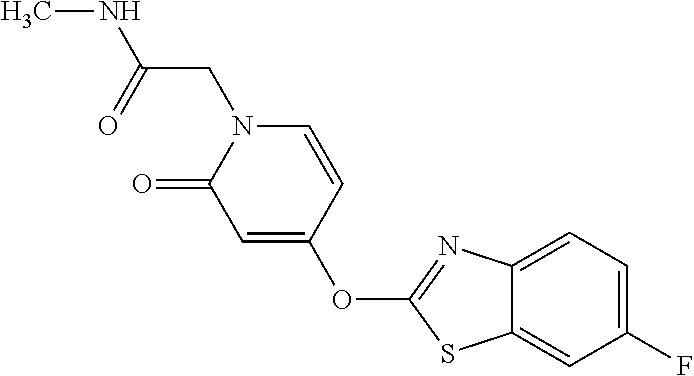
C00094
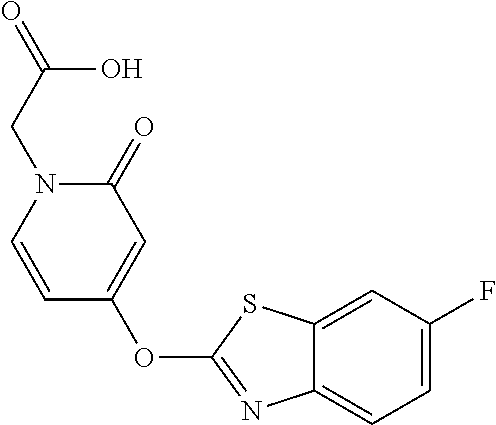
C00095

C00096

C00097

C00098

C00099
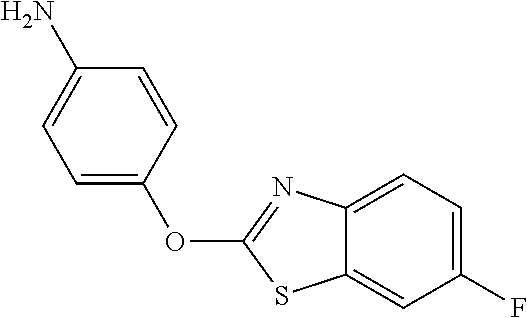
C00100

C00101

C00102

C00103

C00104
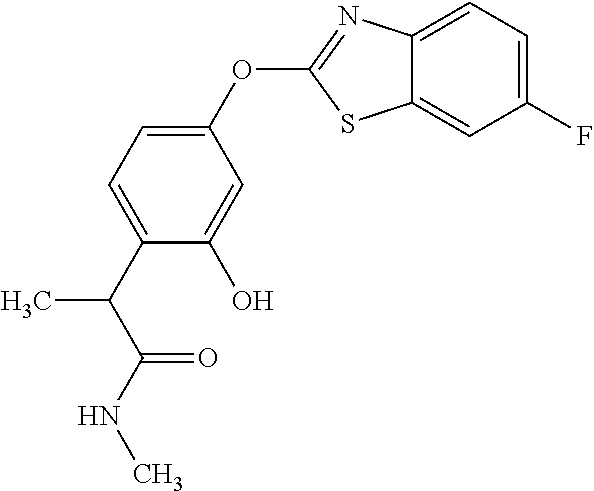
C00105

C00106
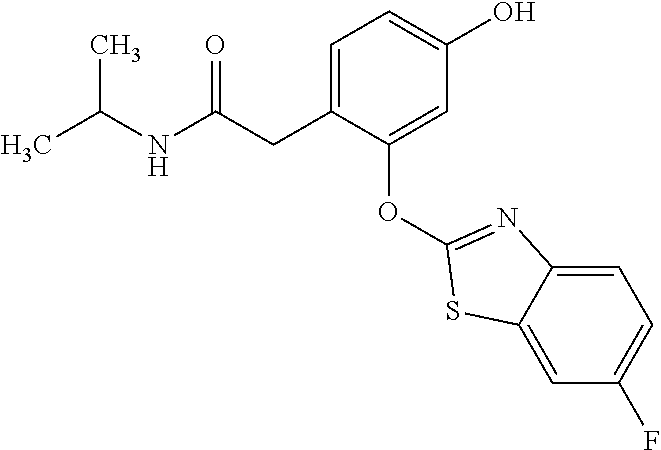
C00107

C00108

C00109

C00110
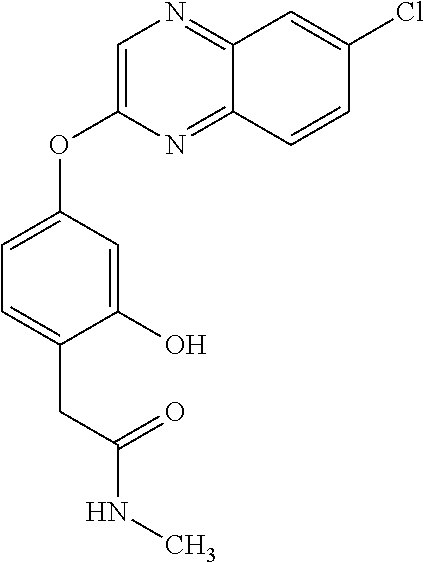
C00111

C00112

C00113

C00114
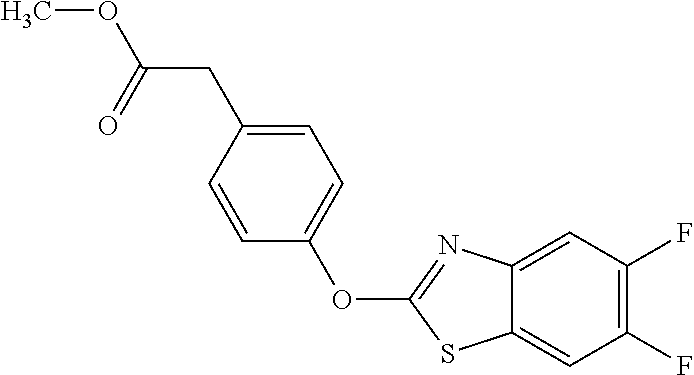
C00115

C00116
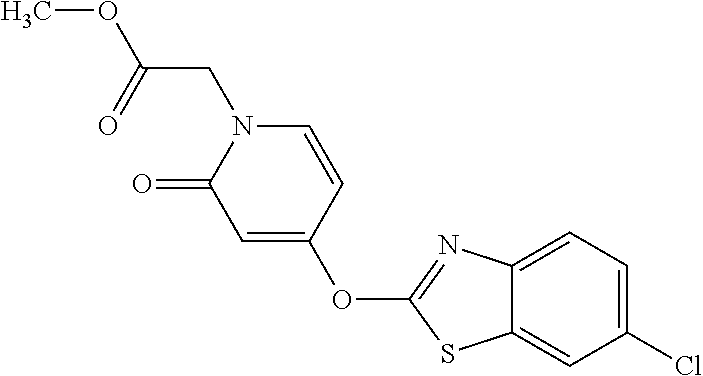
C00117

C00118
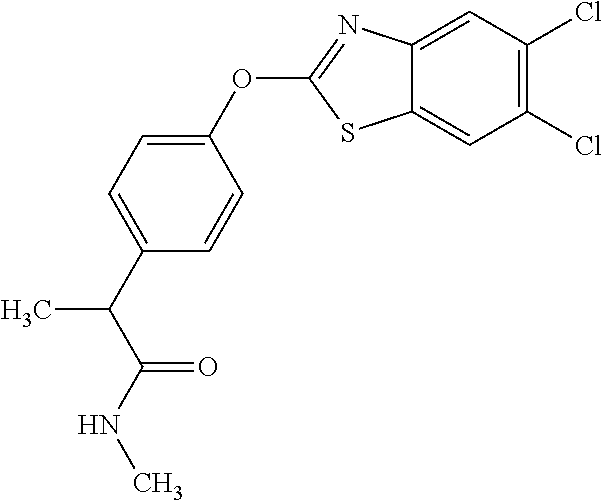
C00119

C00120

C00121

C00122

C00123

C00124

C00125

C00126

C00127

C00128

C00129

C00130

C00131

C00132

C00133

C00134

C00135

C00136

C00137
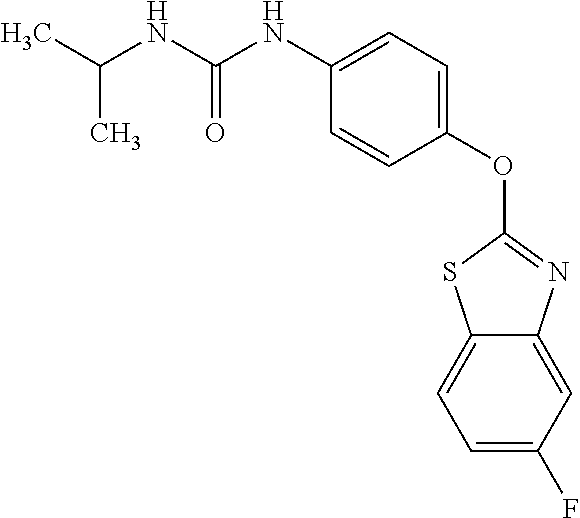
C00138

C00139

C00140

C00141

C00142
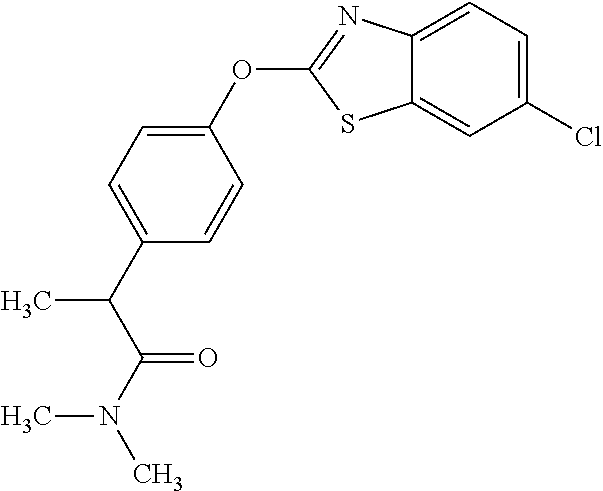
C00143
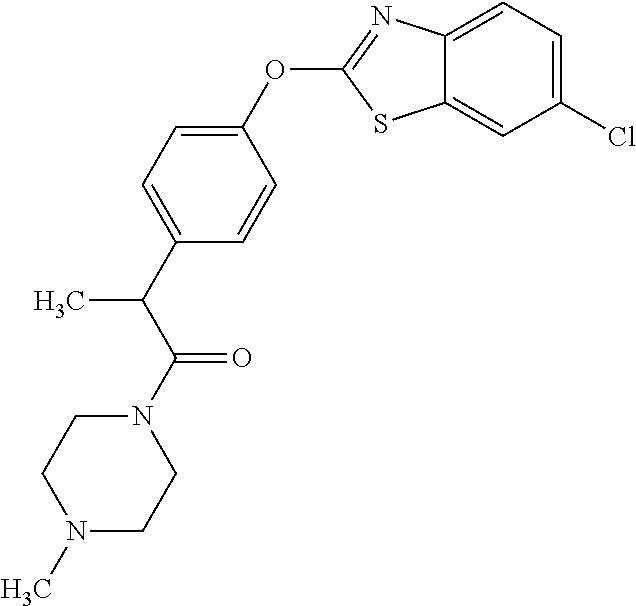
C00144

C00145

C00146

C00147

C00148

C00149

C00150

C00151

C00152

C00153

C00154

C00155

C00156

C00157

C00158

C00159

C00160

C00161
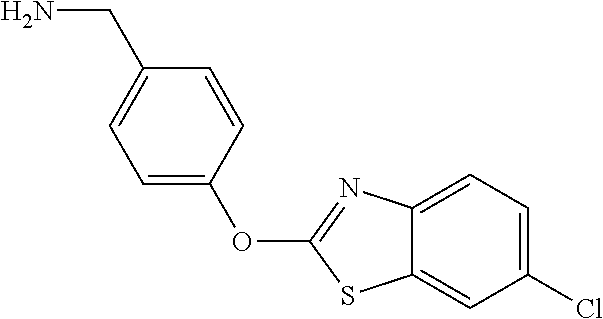
C00162
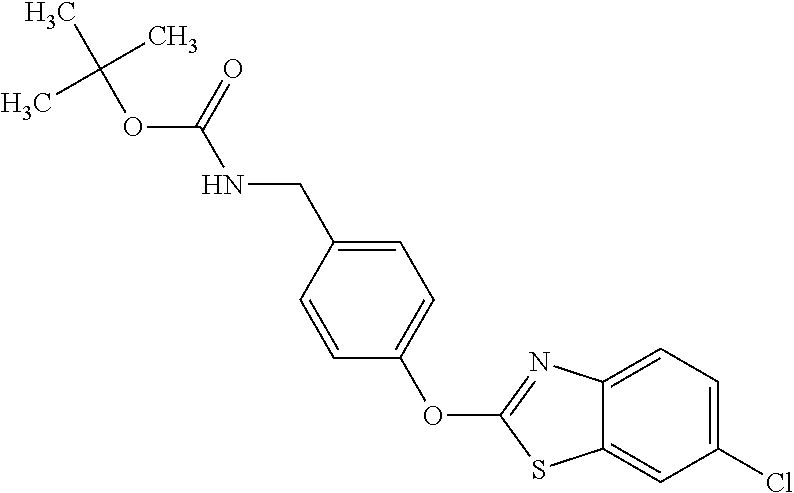
C00163

C00164

C00165

C00166

C00167

C00168

C00169

C00170

C00171

C00172

C00173
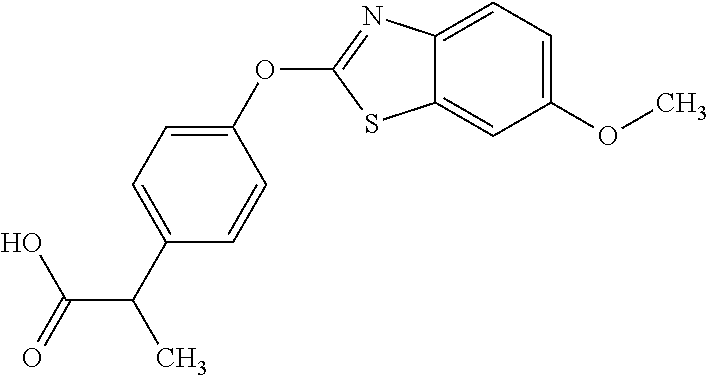
C00174
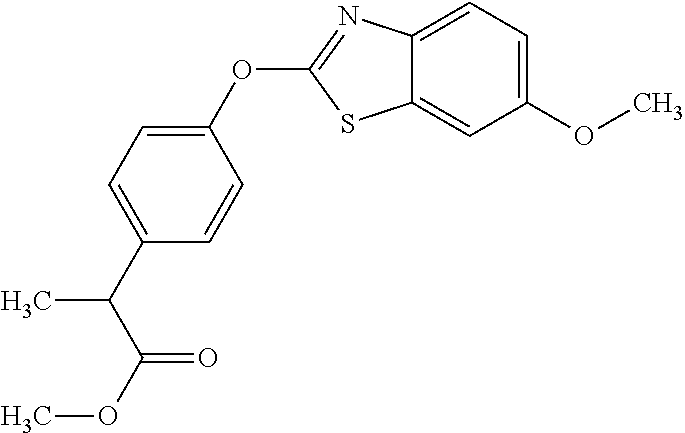
C00175

C00176

C00177

C00178

C00179

C00180

C00181

C00182
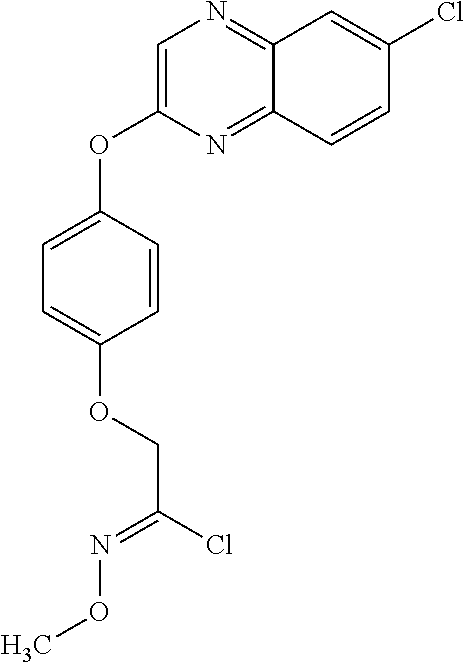
C00183

C00184

C00185
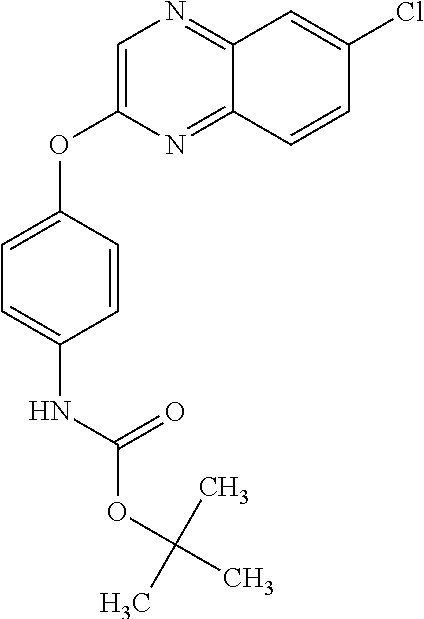
C00186

C00187

C00188

C00189

C00190

C00191

C00192

C00193

C00194

C00195

C00196

C00197

C00198
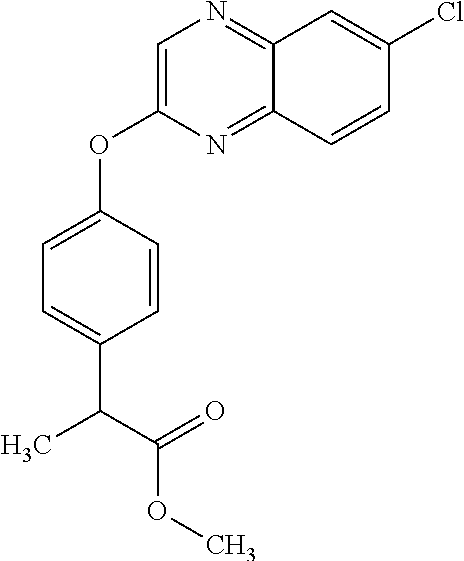
C00199

C00200

C00201

C00202

C00203

C00204
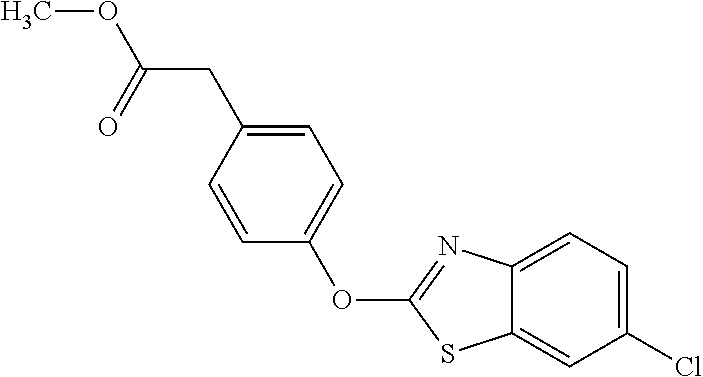
C00205

C00206

C00207
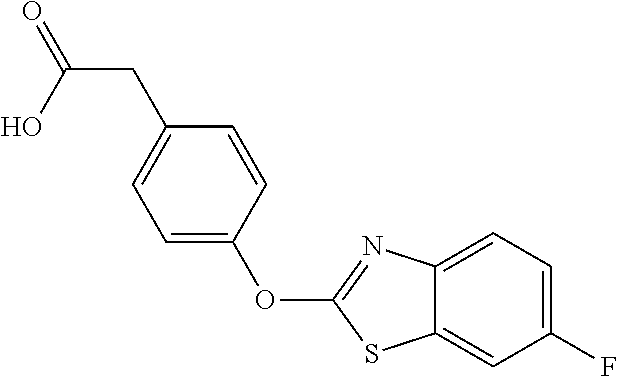
C00208

C00209

C00210

C00211

C00212

C00213

C00214

C00215

C00216

C00217

C00218

C00219

C00220

C00221

C00222

C00223

C00224
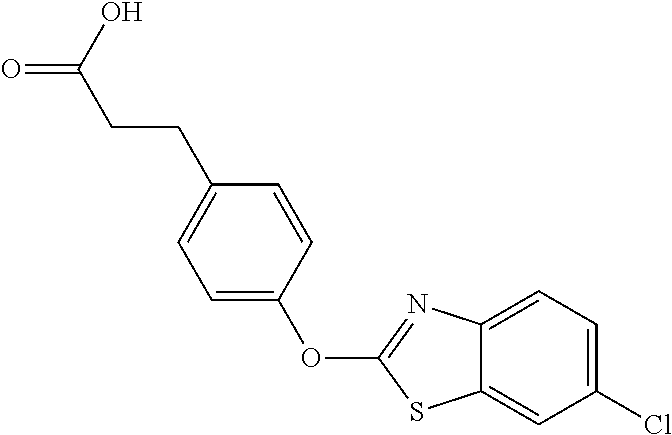
C00225

C00226

C00227

C00228

C00229

C00230

C00231

C00232

C00233

C00234

C00235

C00236

C00237

C00238
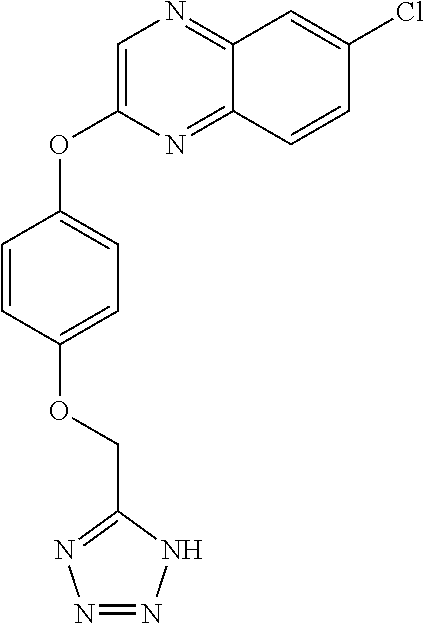
C00239

C00240

C00241
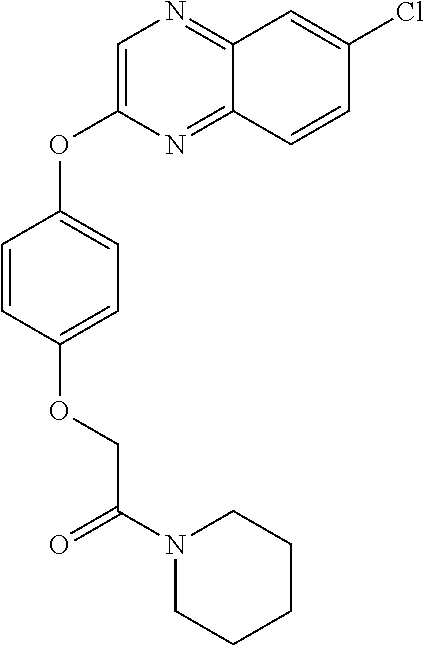
C00242

C00243

C00244

C00245

C00246

C00247

C00248

C00249

C00250

C00251

C00252

C00253
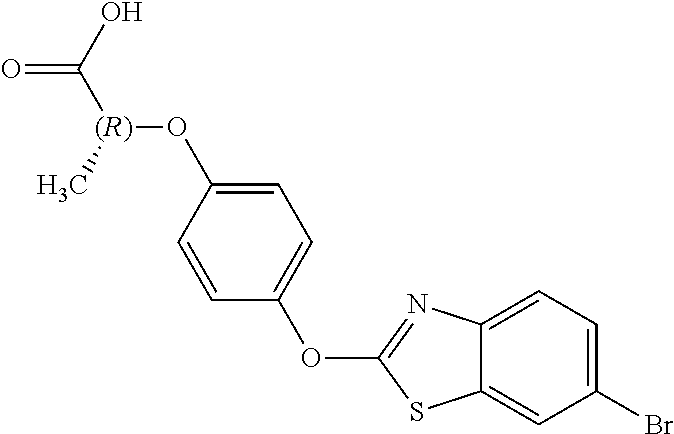
C00254

C00255

C00256

C00257

C00258

C00259

C00260

C00261

C00262

D00001

D00002

D00003
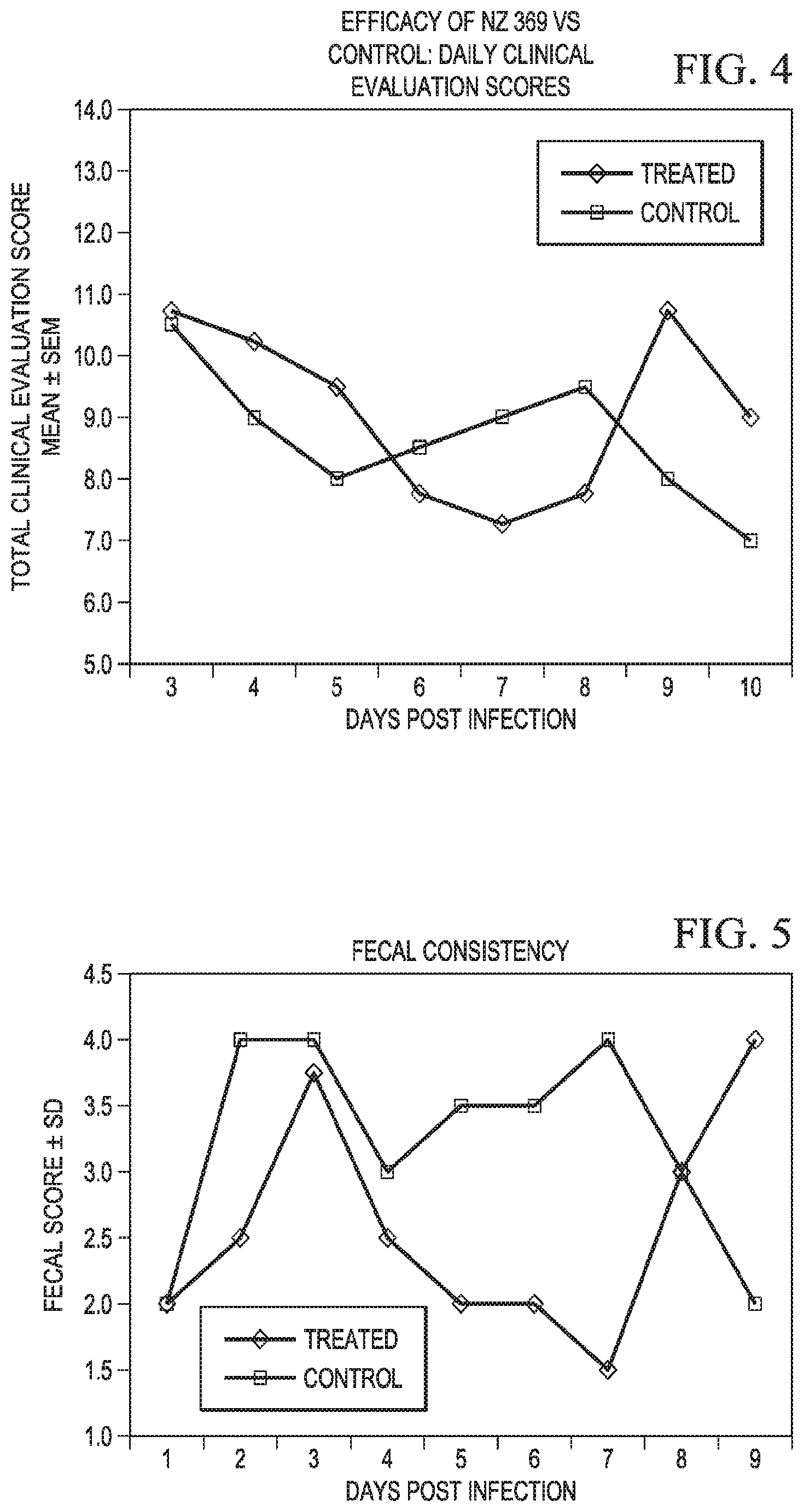
D00004
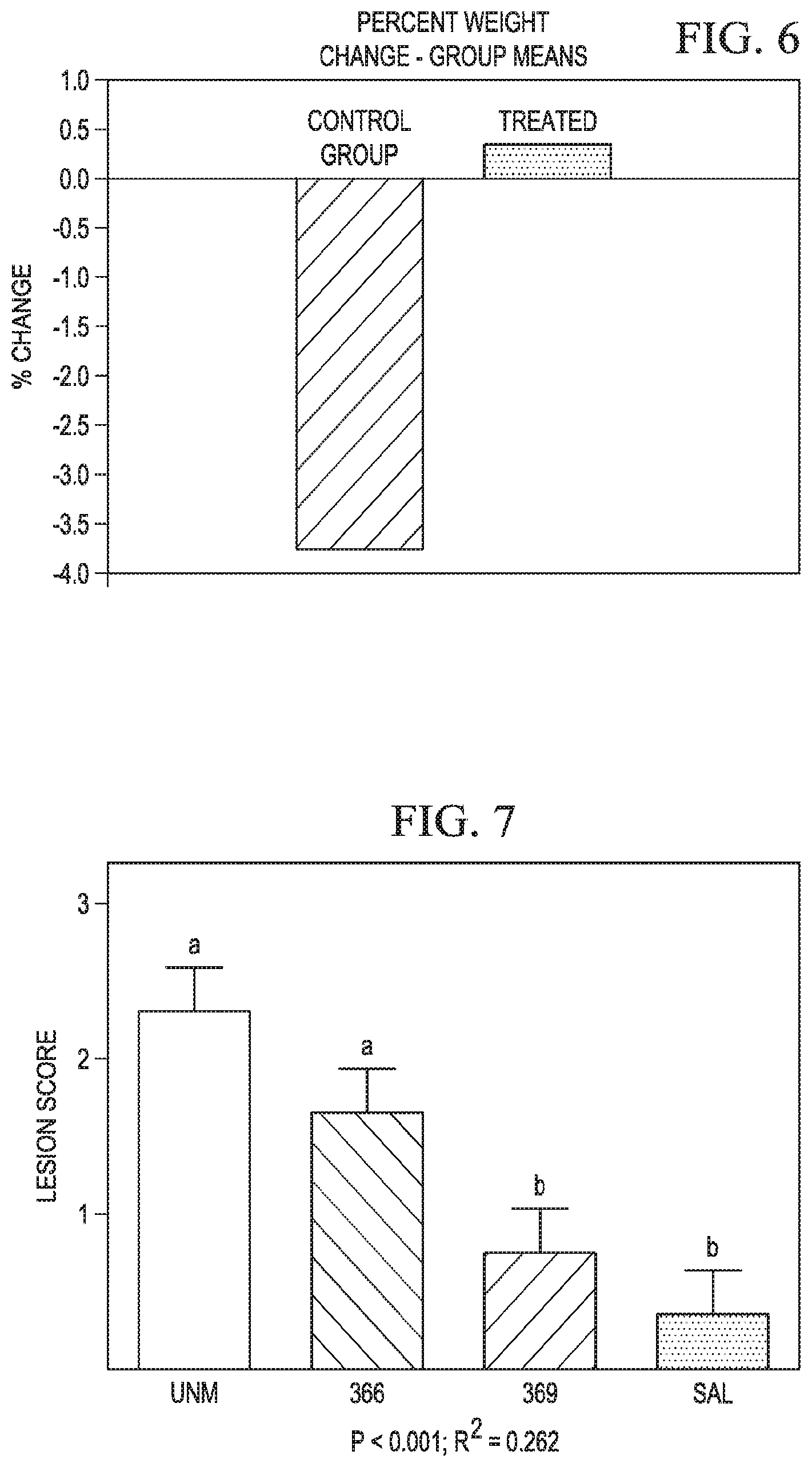
XML
uspto.report is an independent third-party trademark research tool that is not affiliated, endorsed, or sponsored by the United States Patent and Trademark Office (USPTO) or any other governmental organization. The information provided by uspto.report is based on publicly available data at the time of writing and is intended for informational purposes only.
While we strive to provide accurate and up-to-date information, we do not guarantee the accuracy, completeness, reliability, or suitability of the information displayed on this site. The use of this site is at your own risk. Any reliance you place on such information is therefore strictly at your own risk.
All official trademark data, including owner information, should be verified by visiting the official USPTO website at www.uspto.gov. This site is not intended to replace professional legal advice and should not be used as a substitute for consulting with a legal professional who is knowledgeable about trademark law.